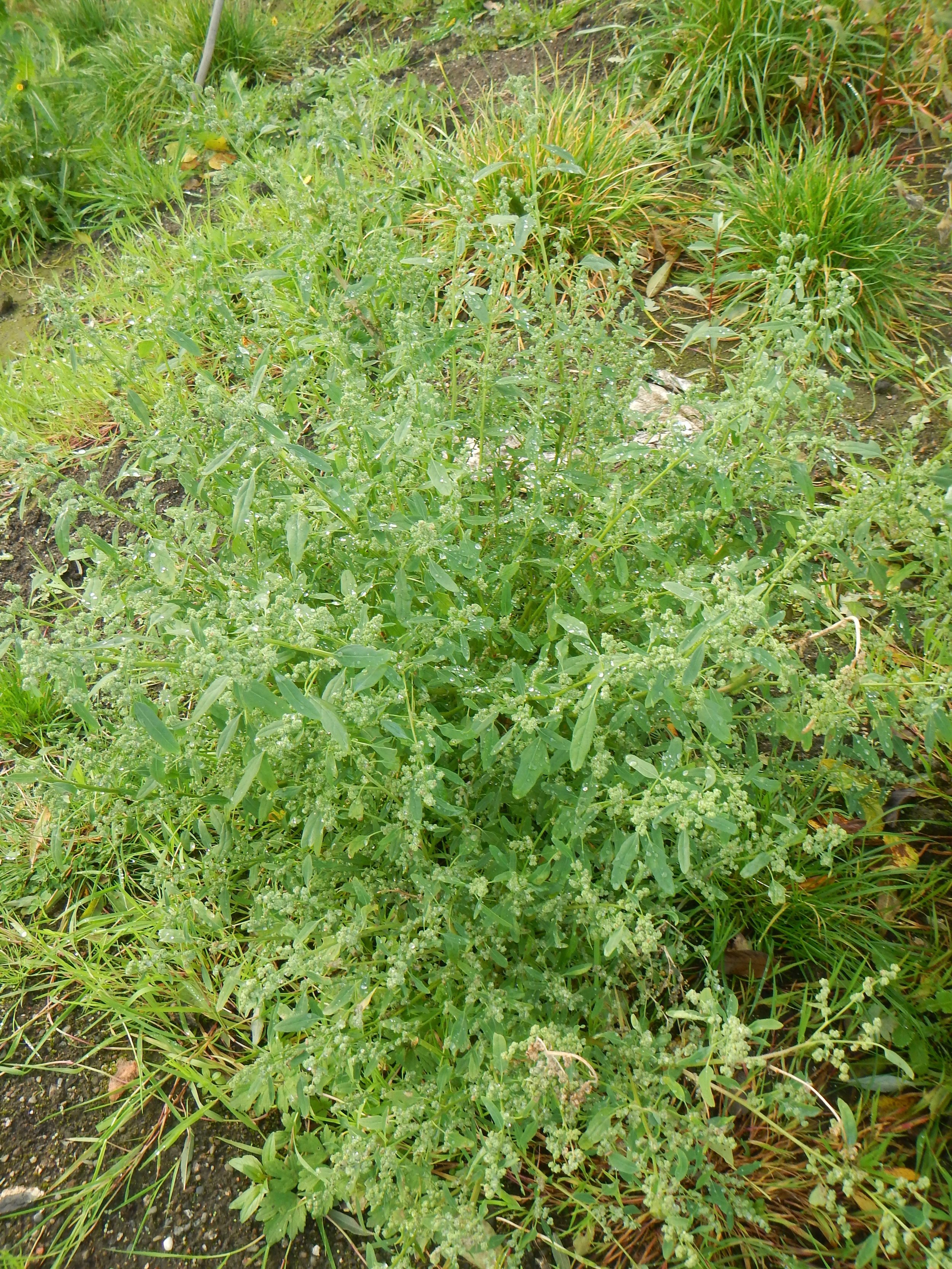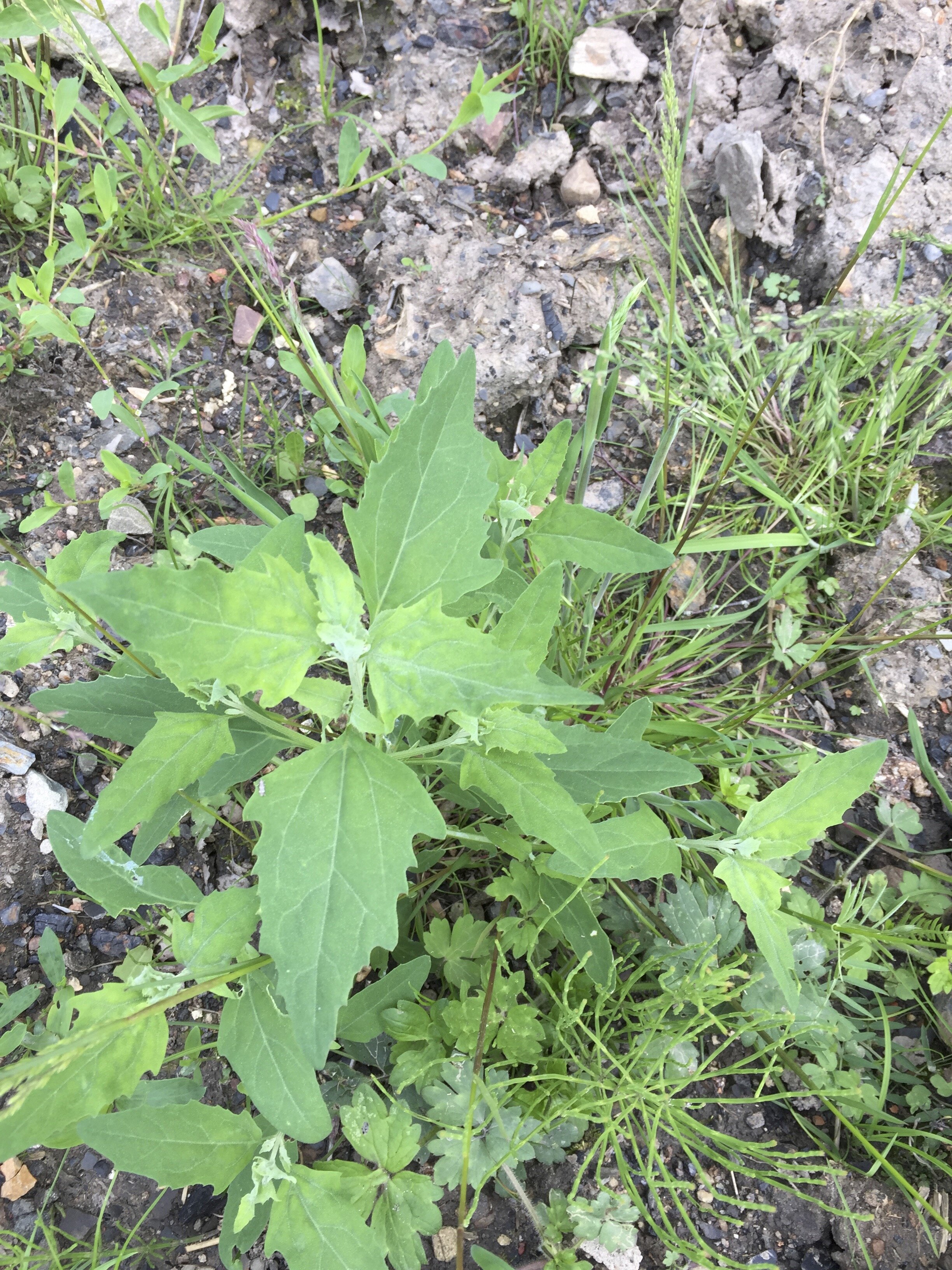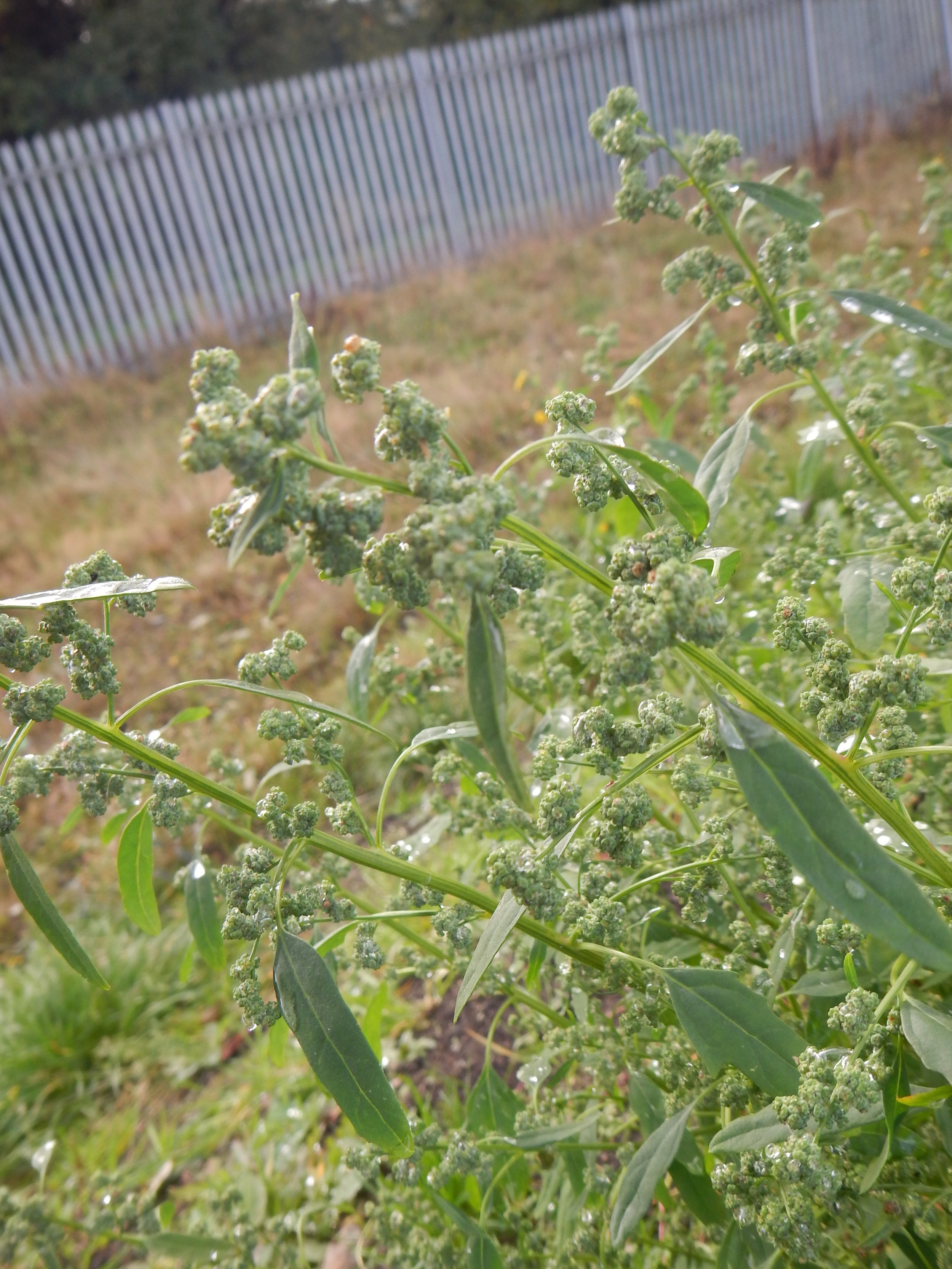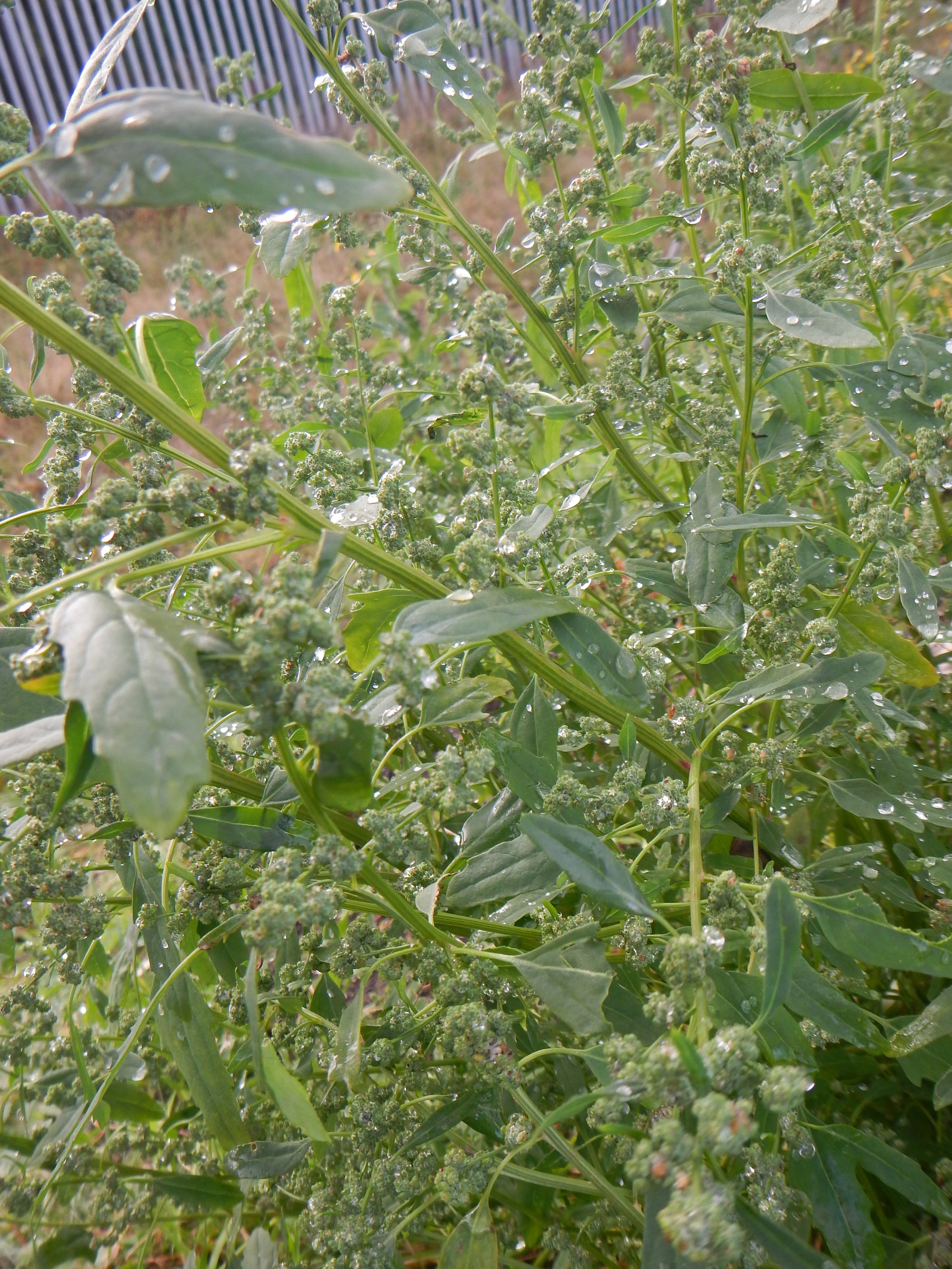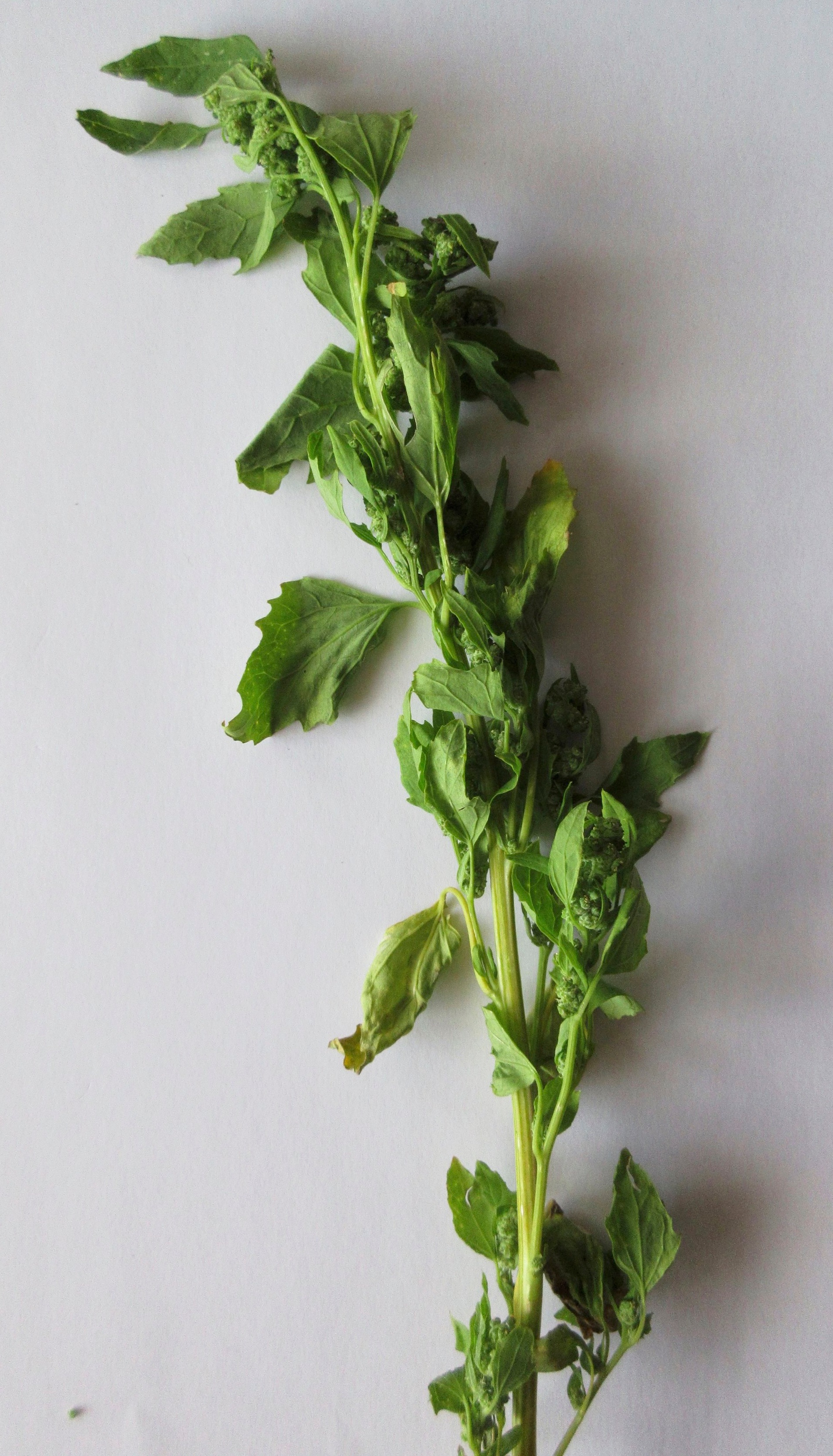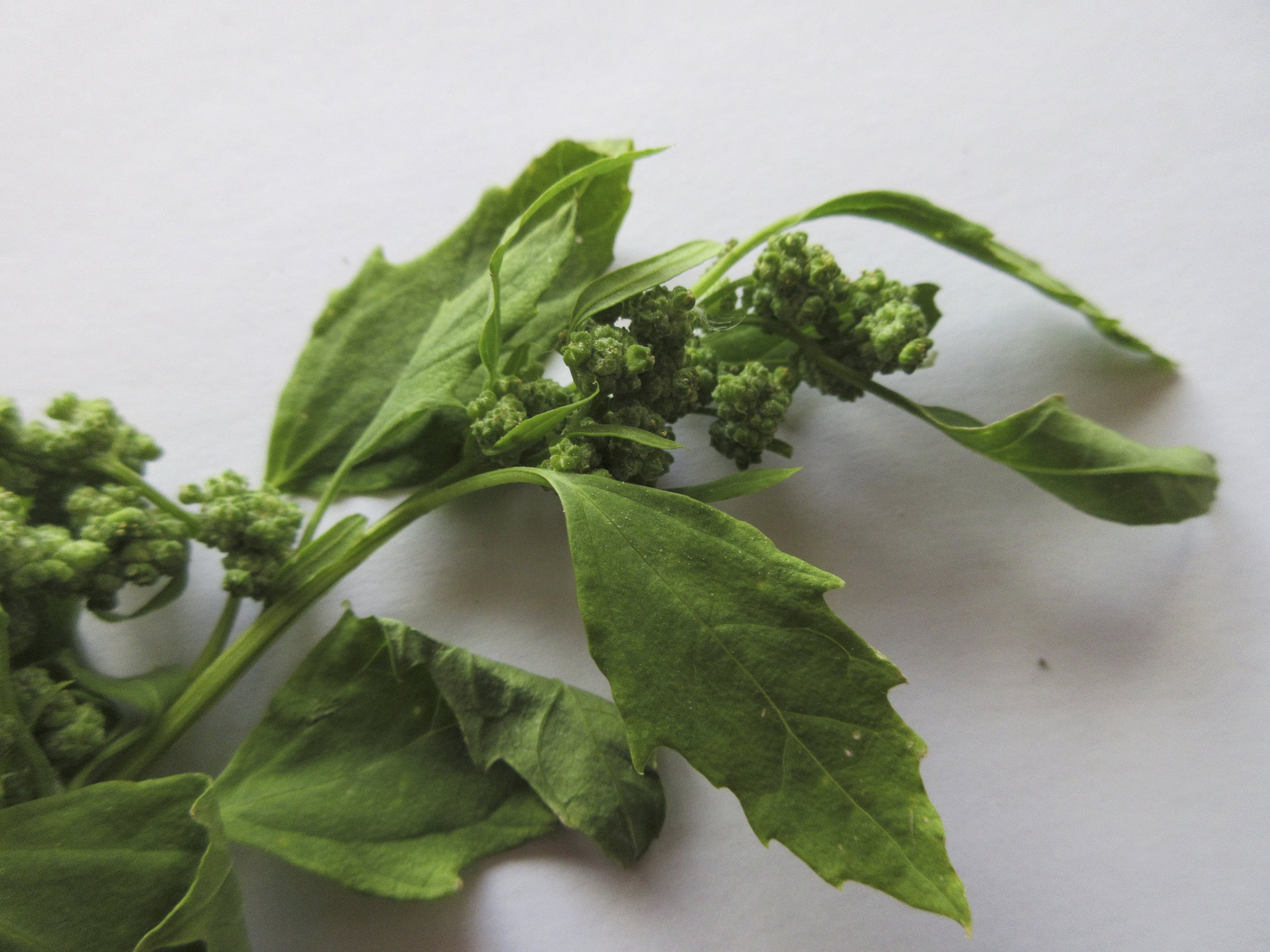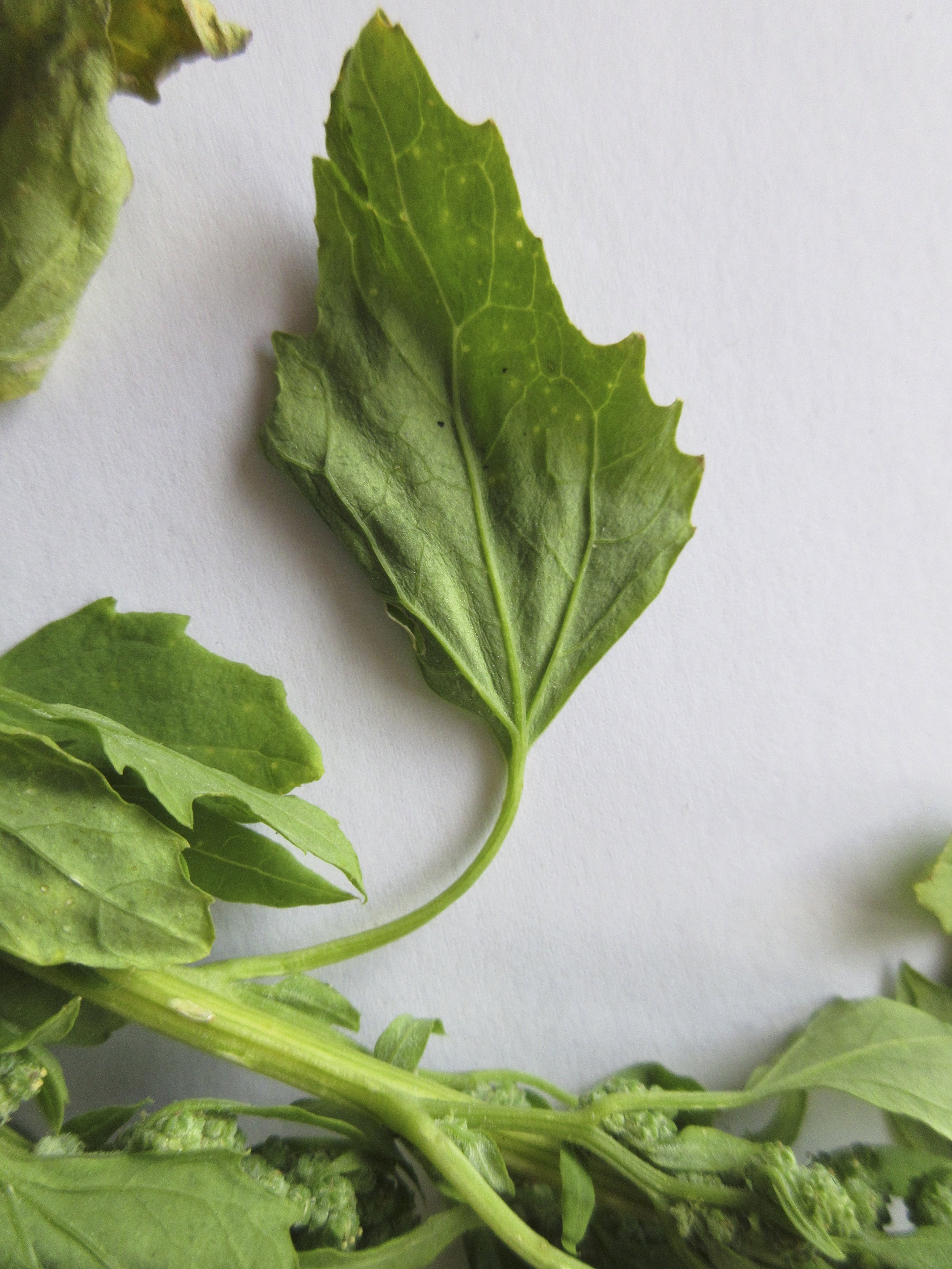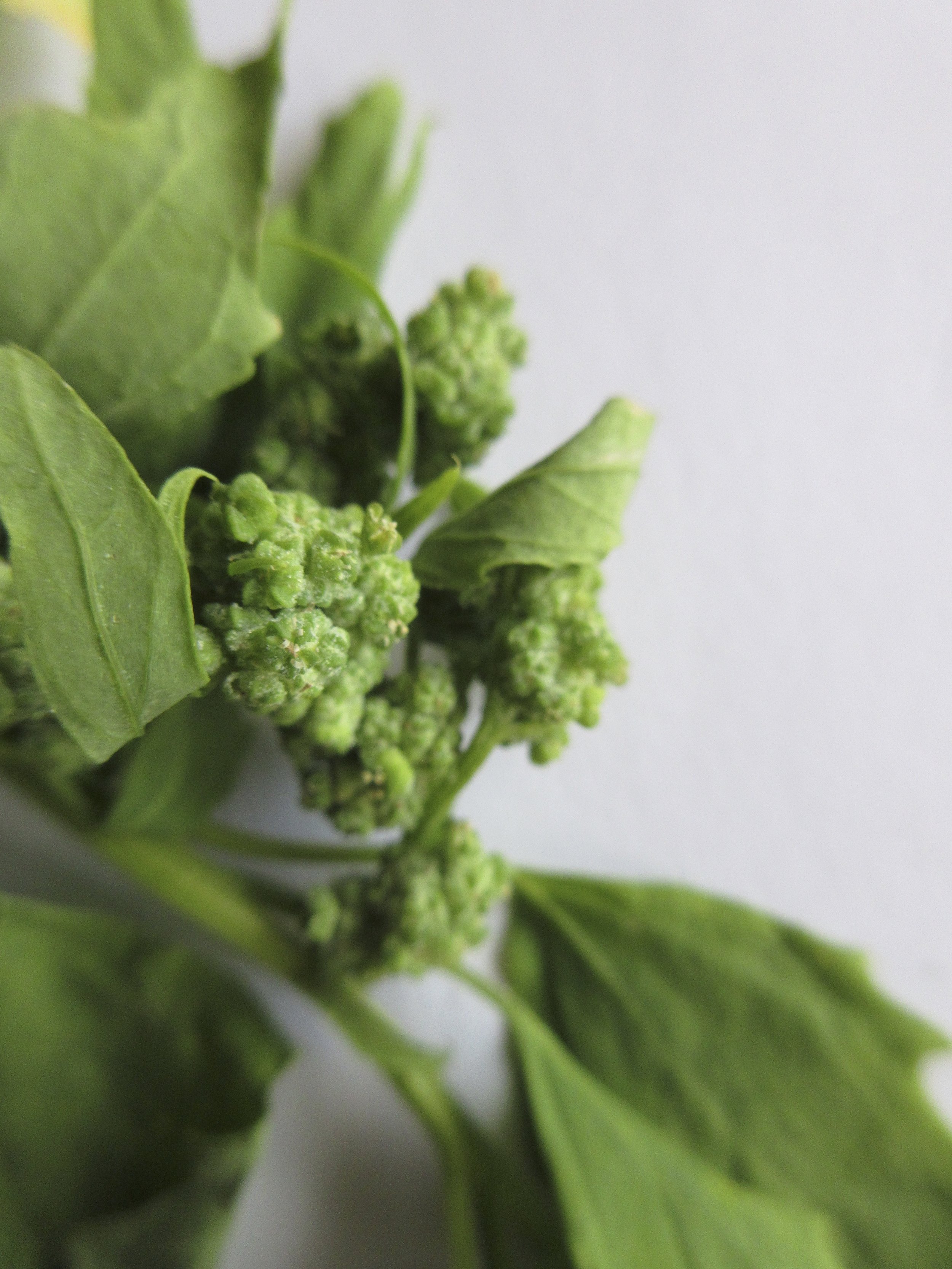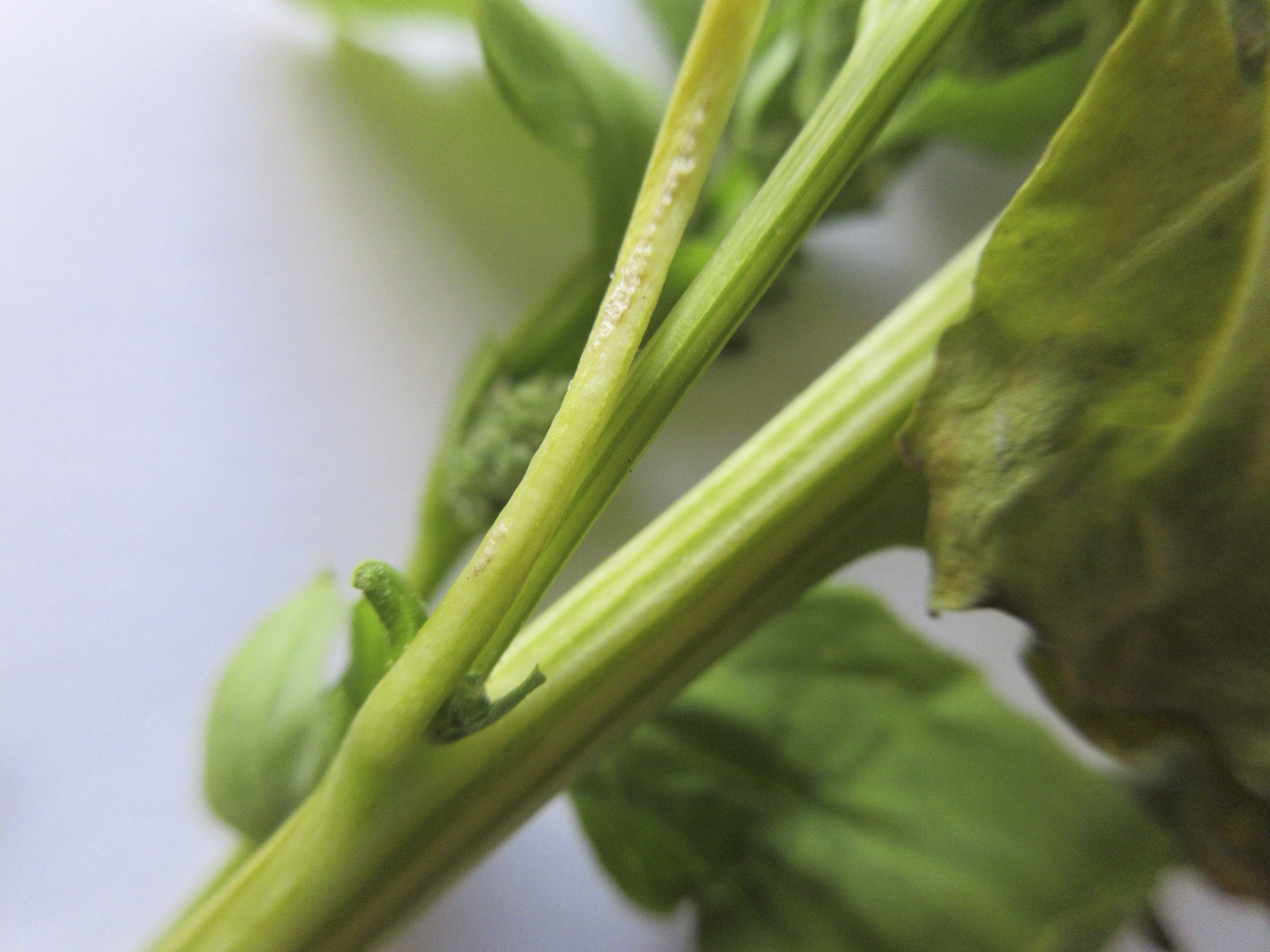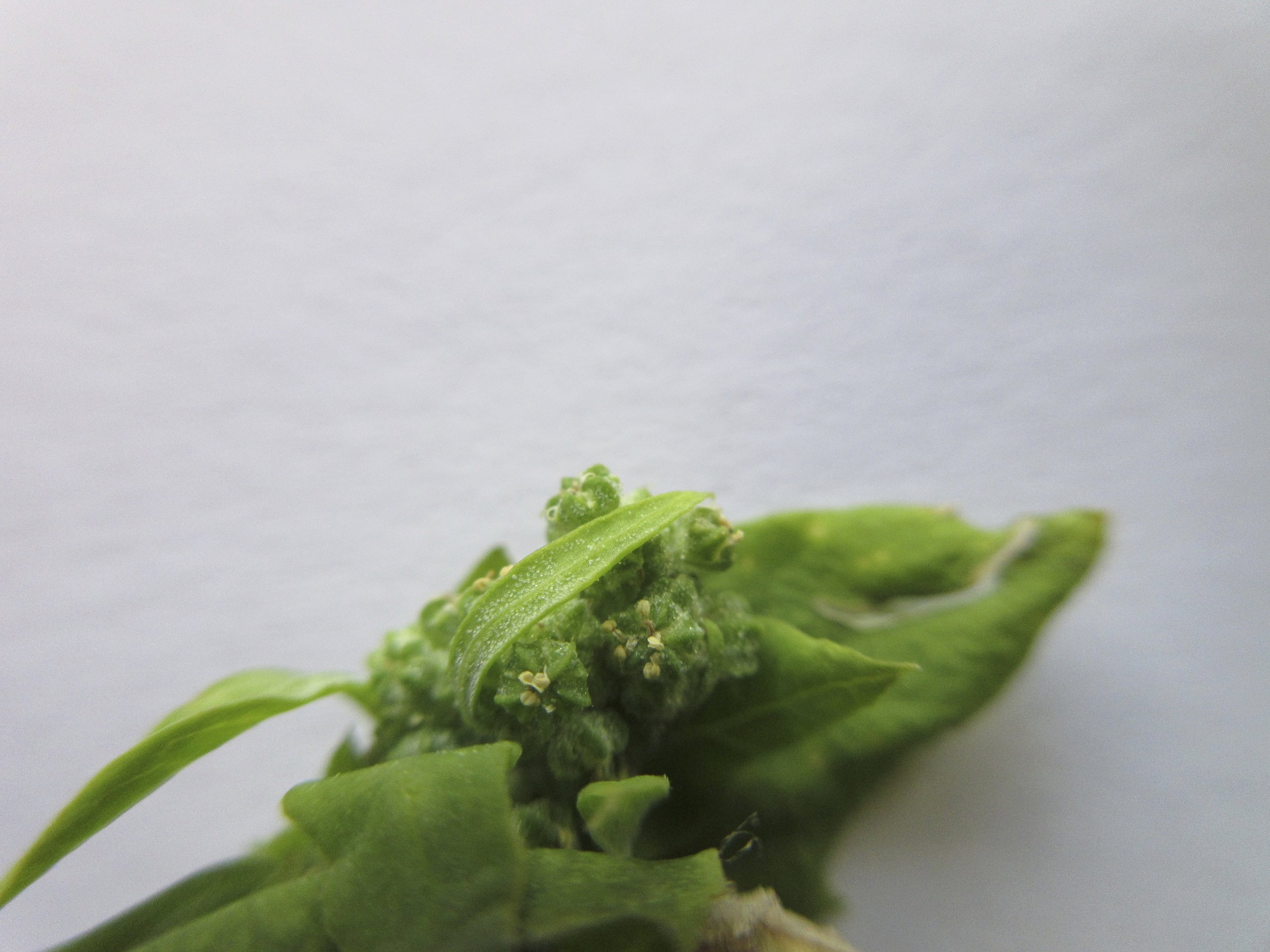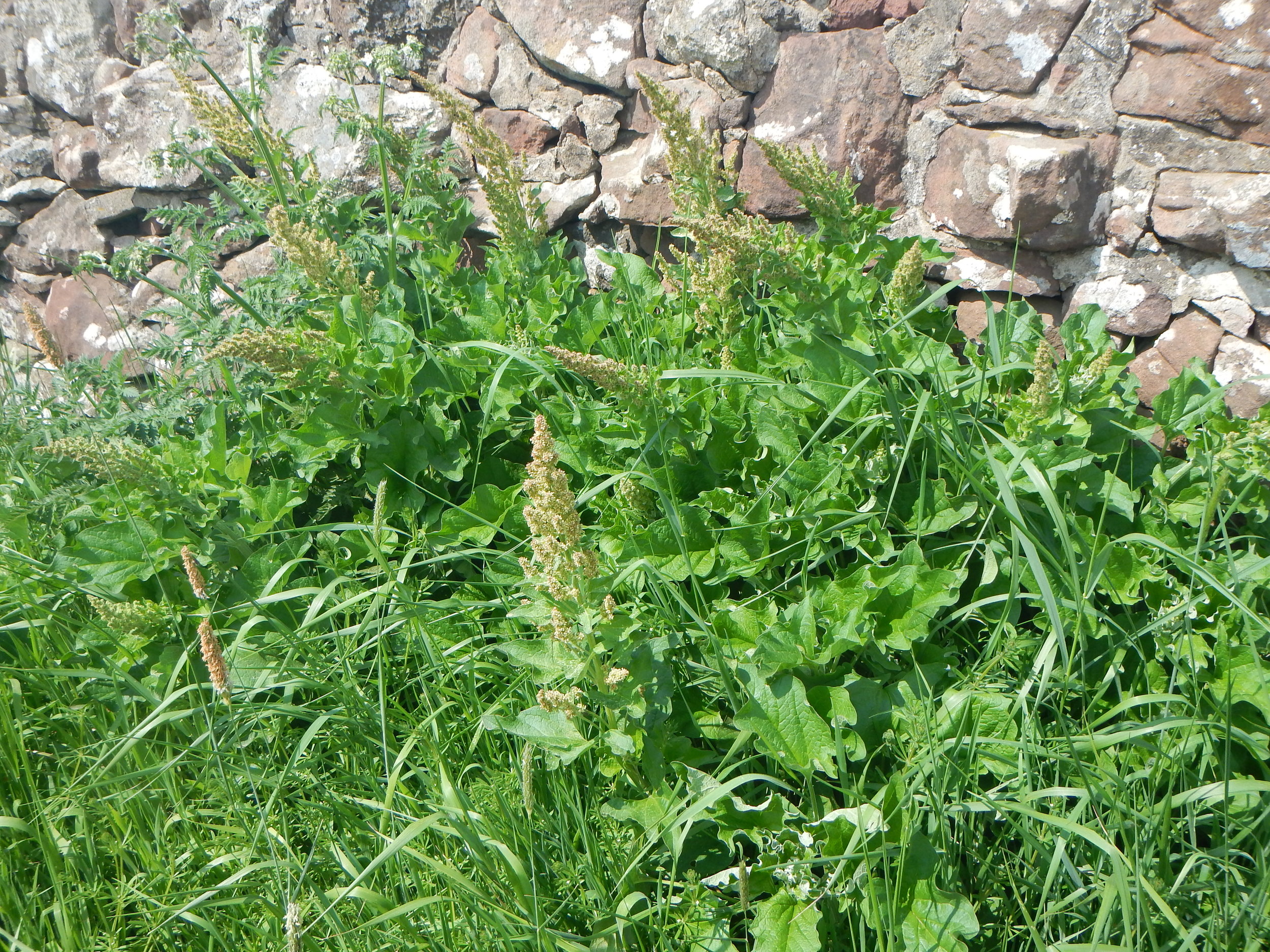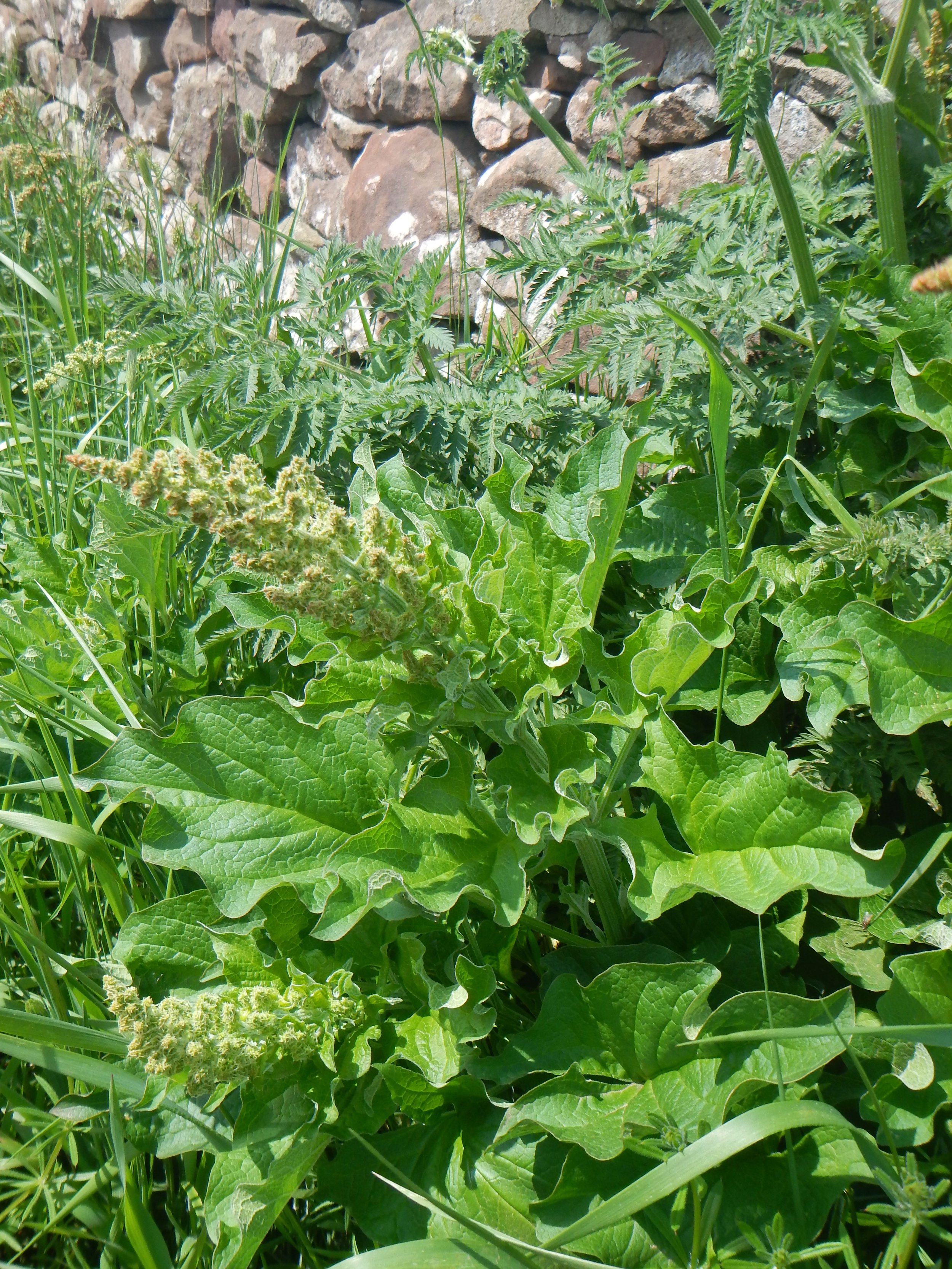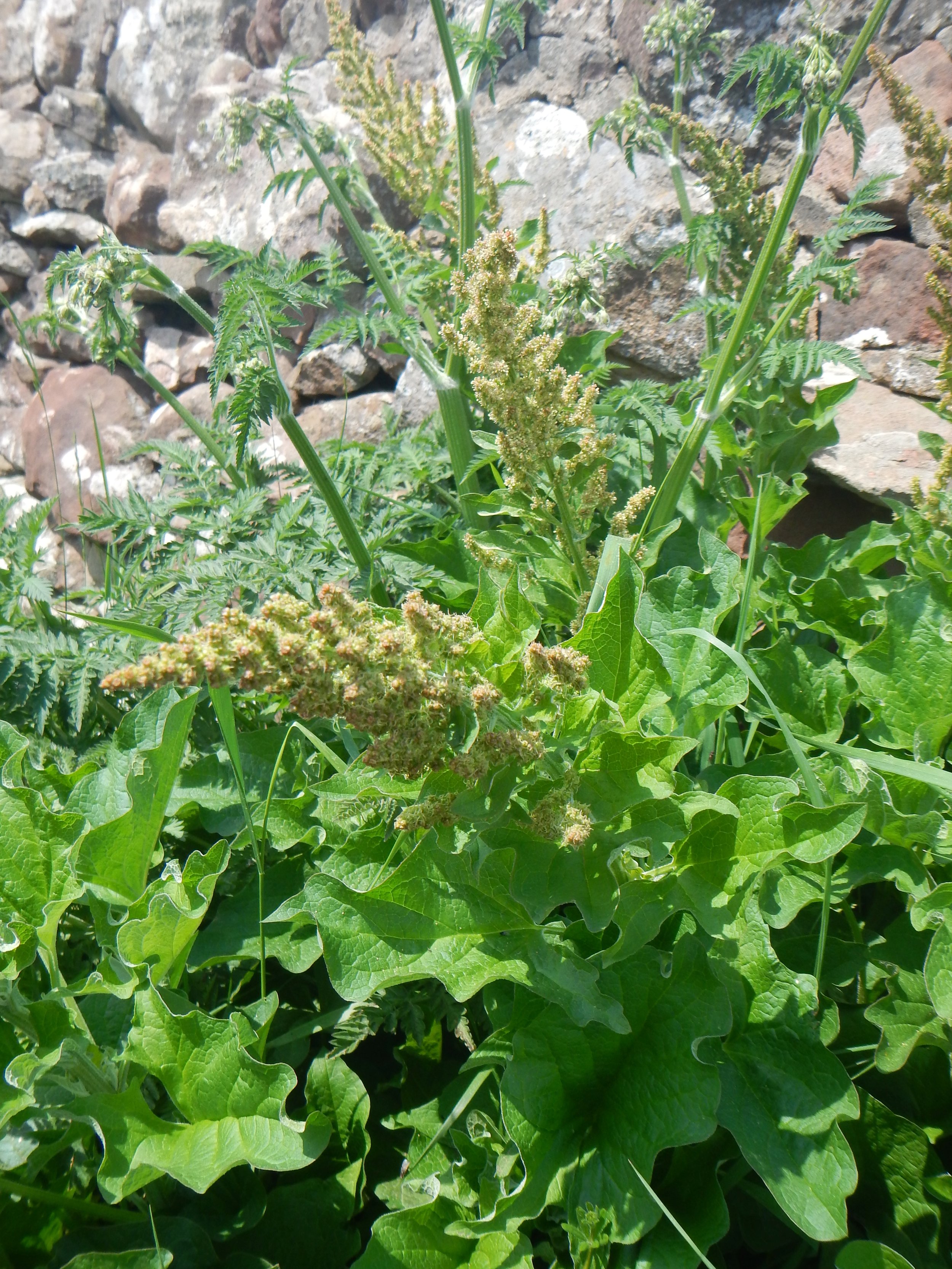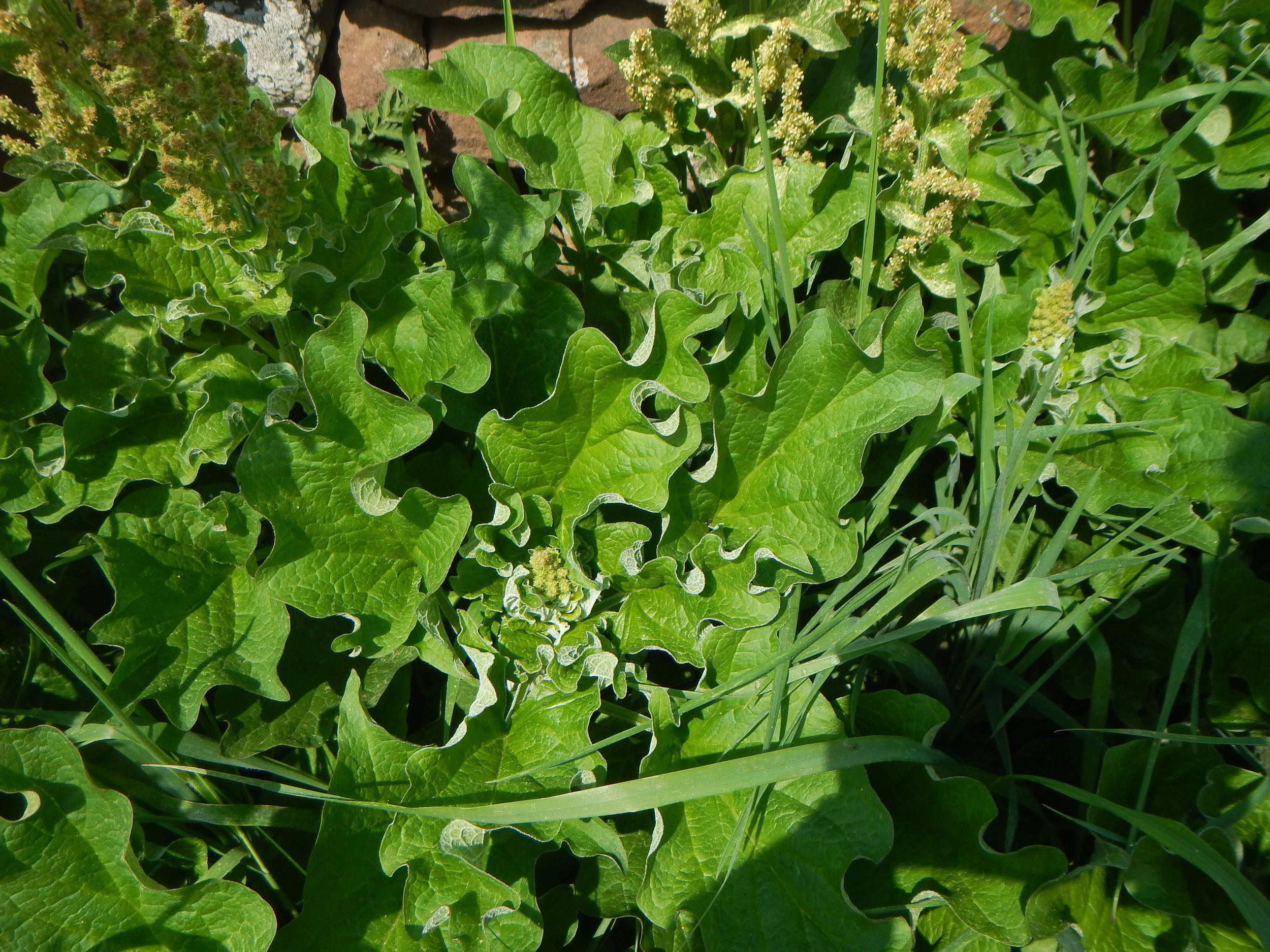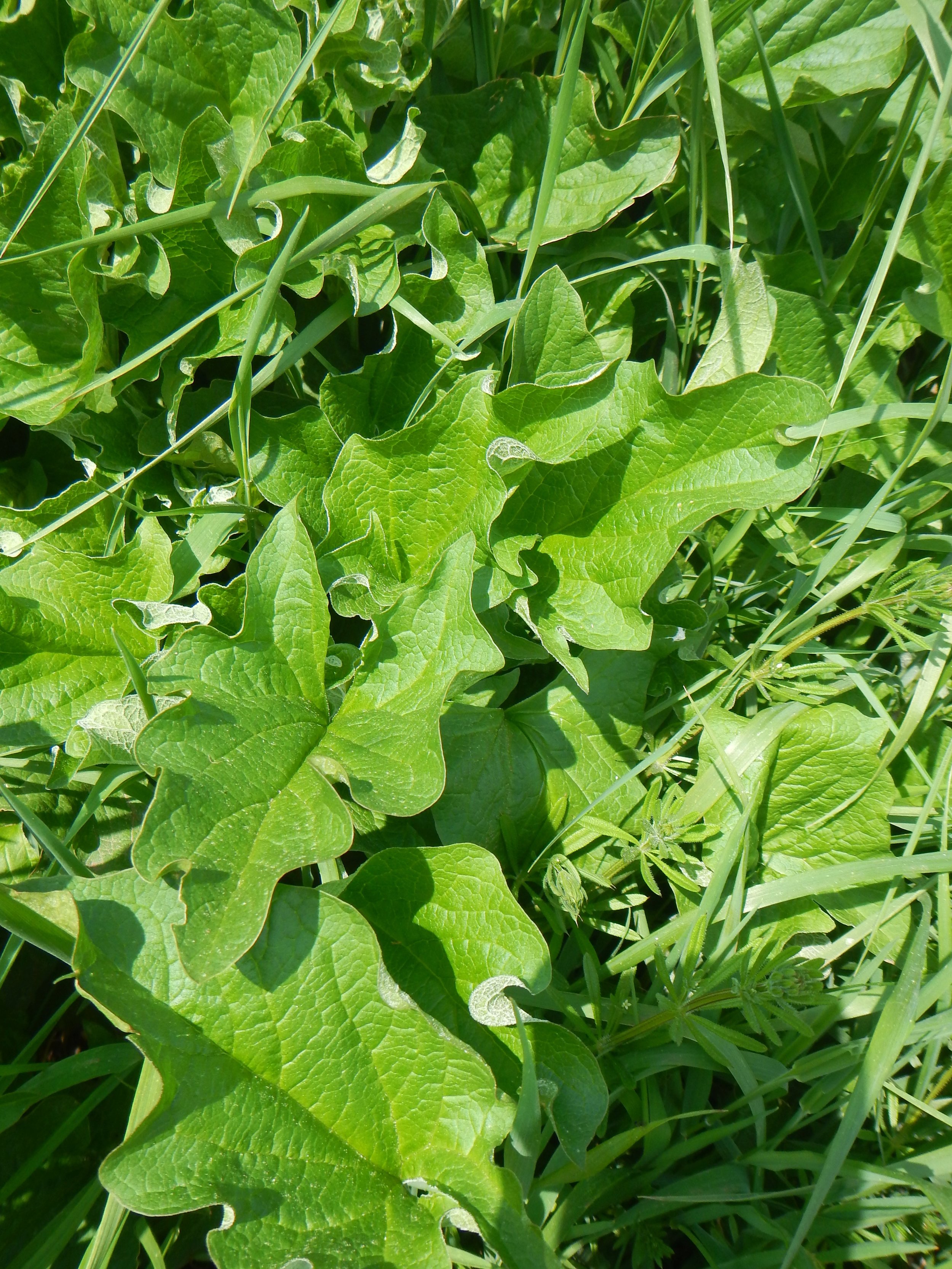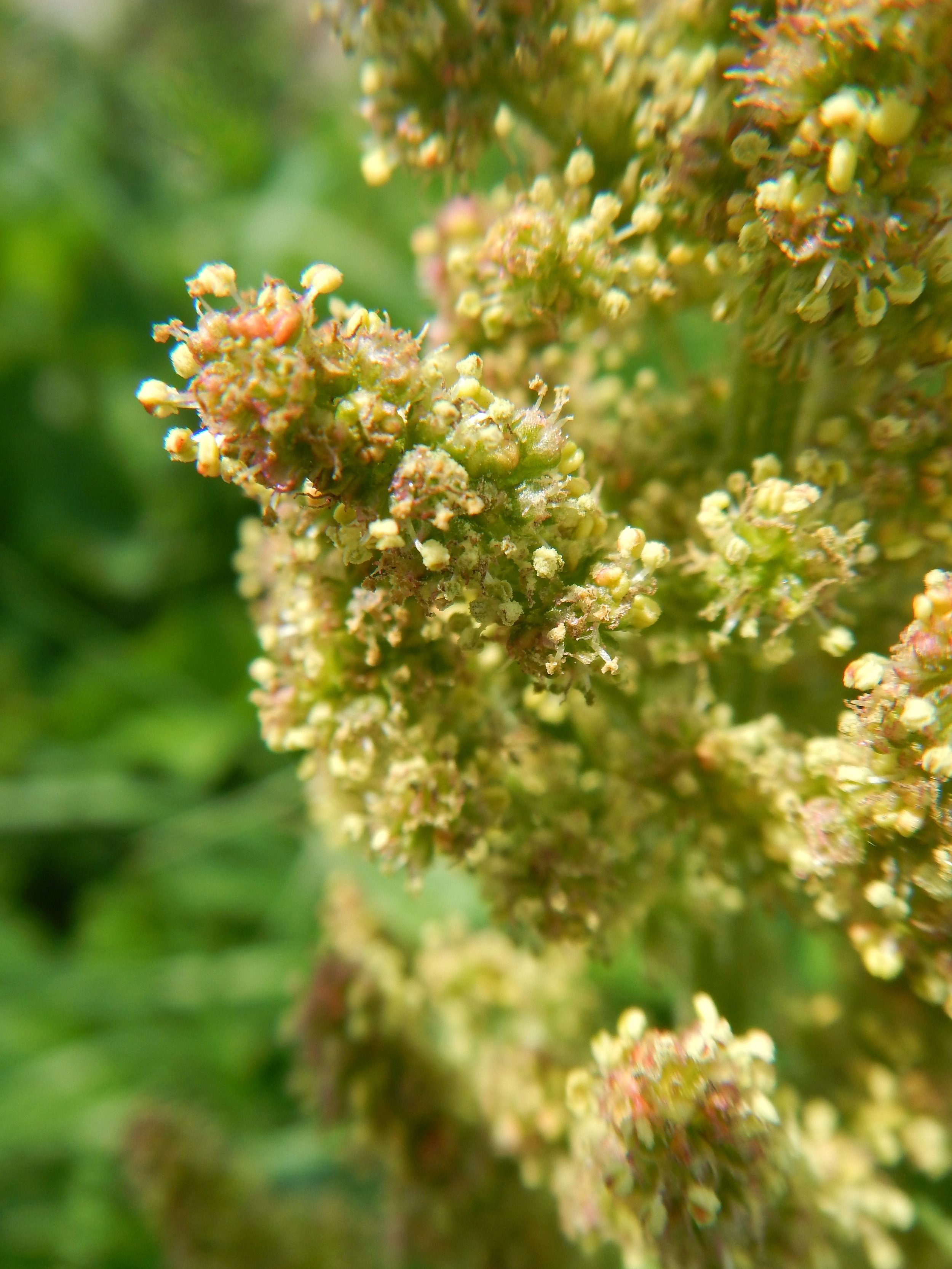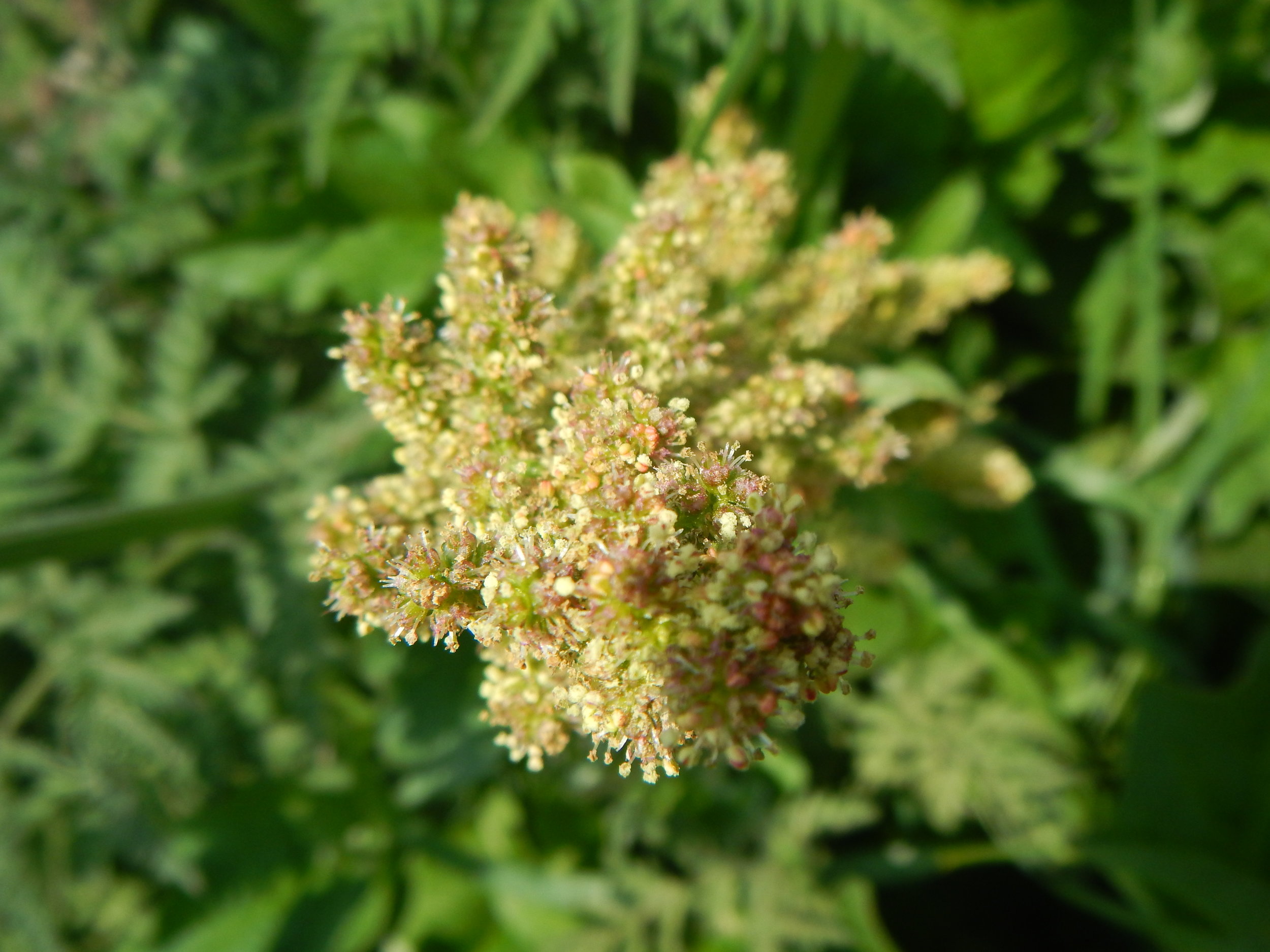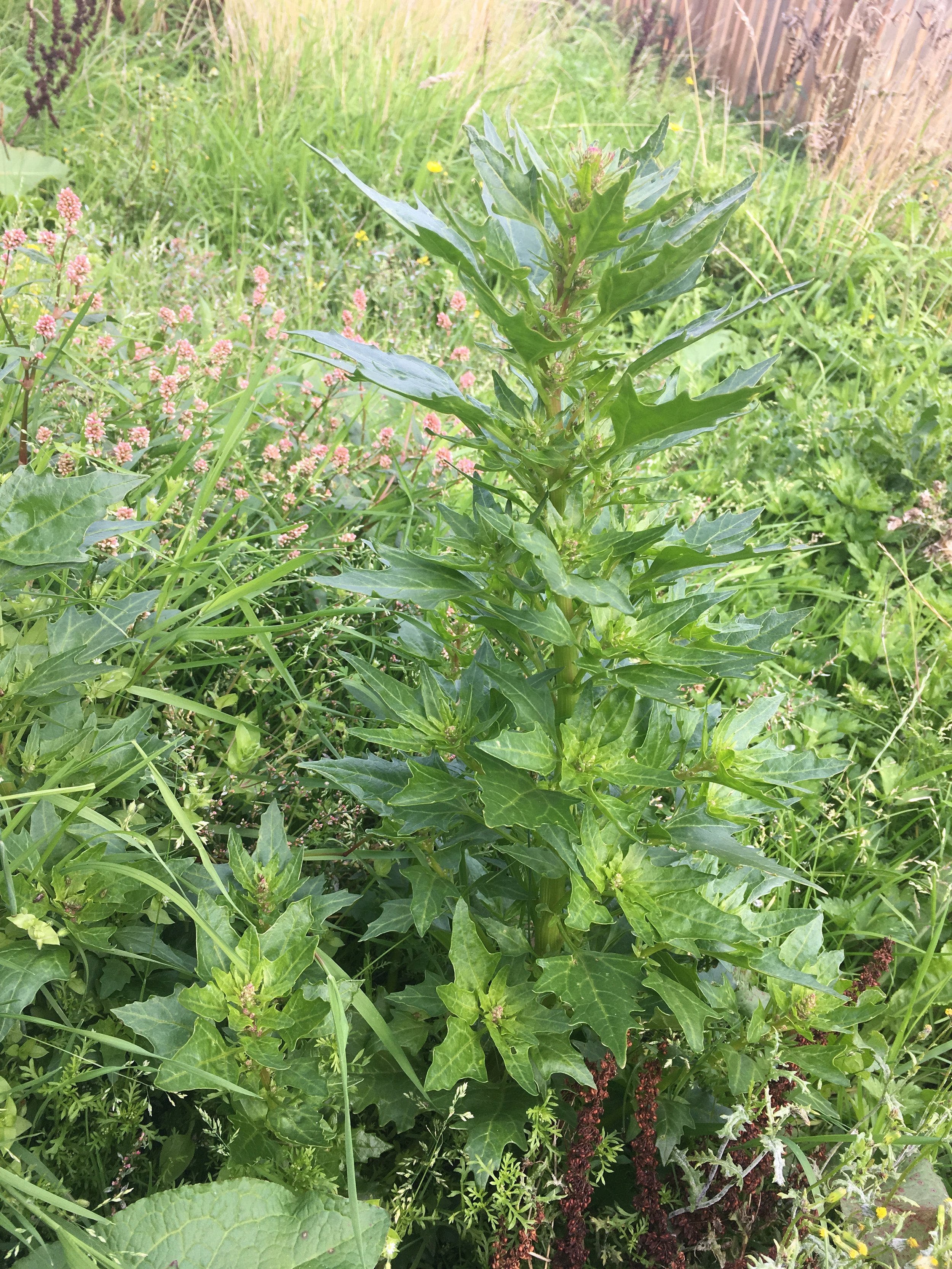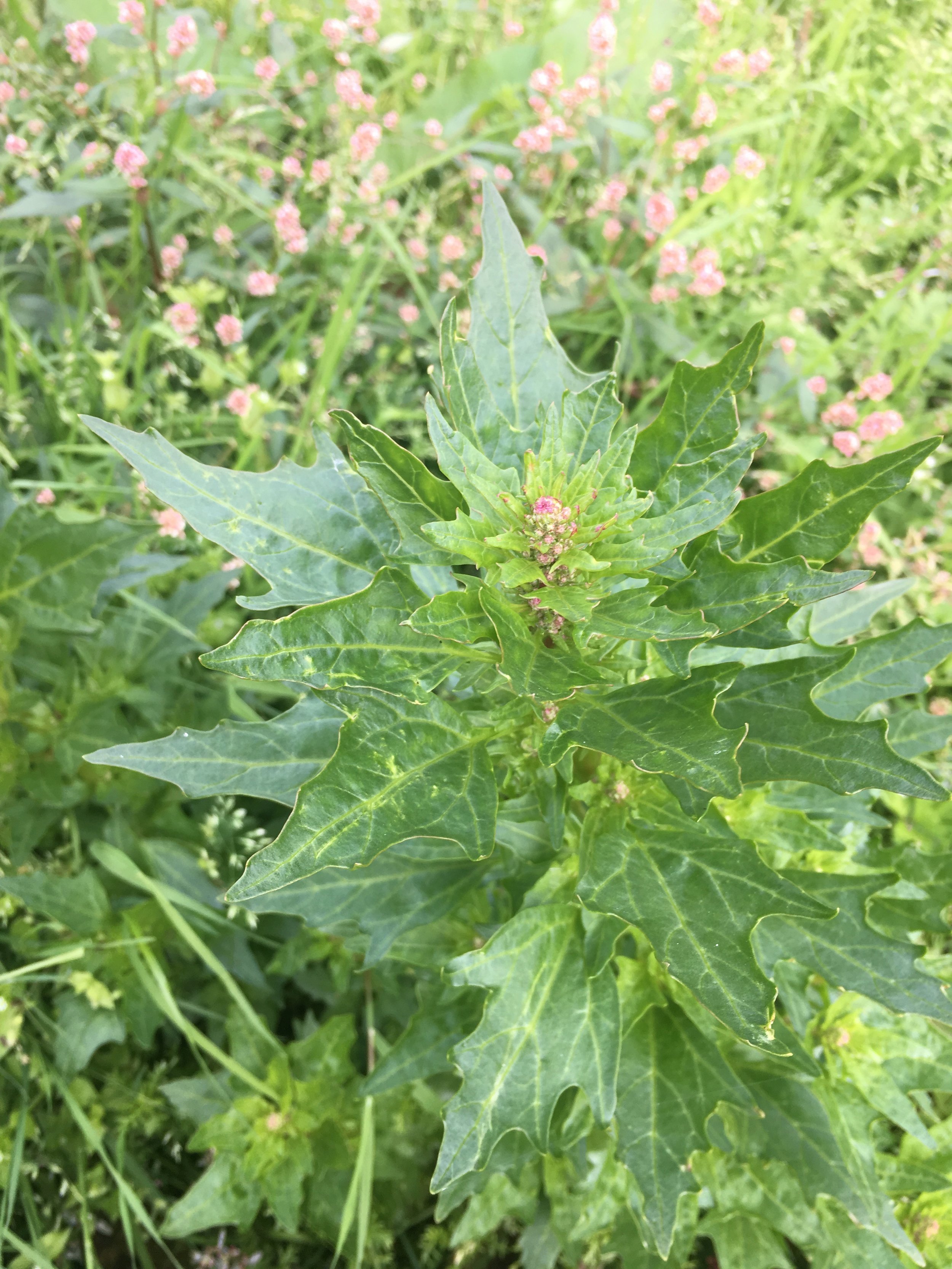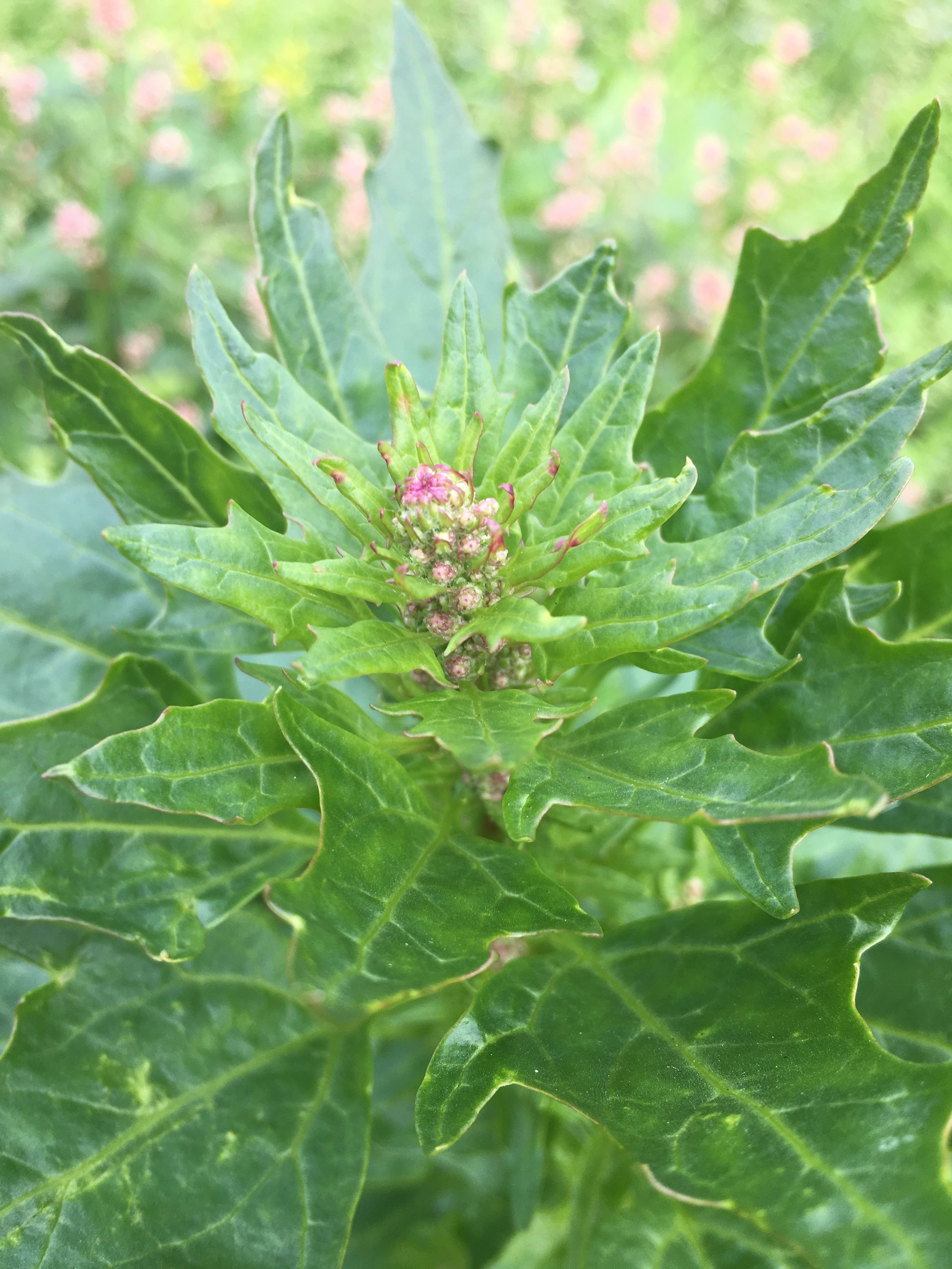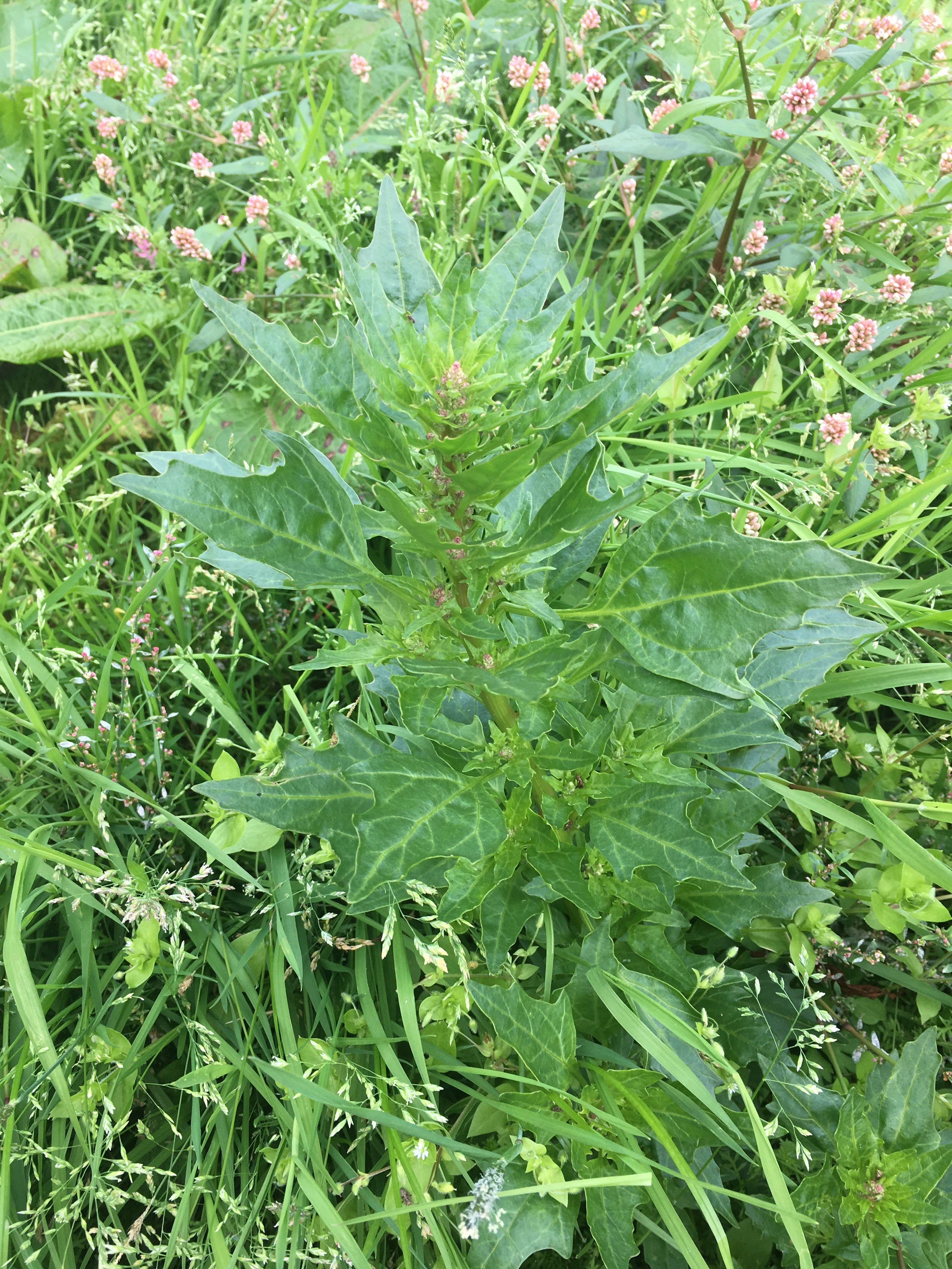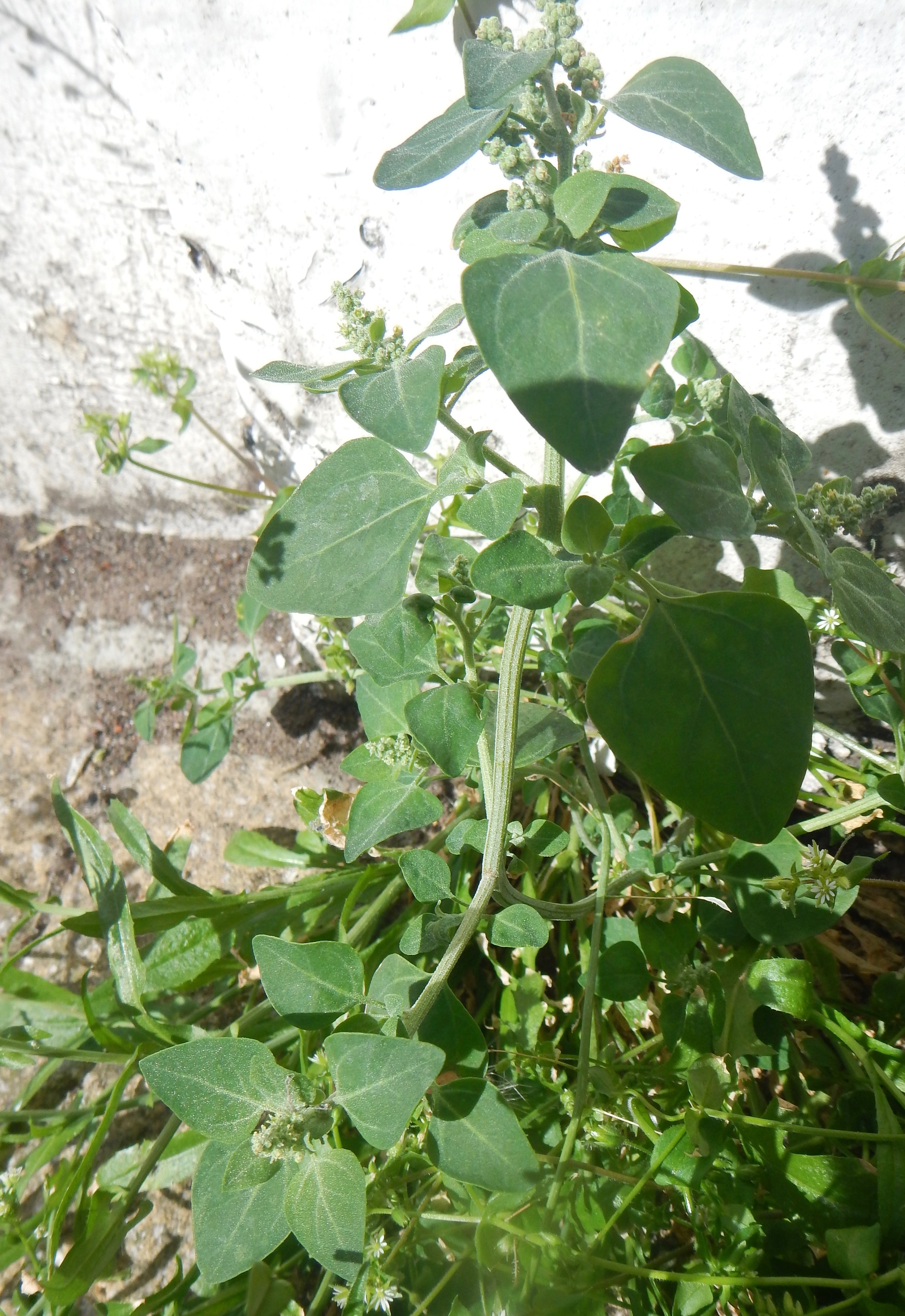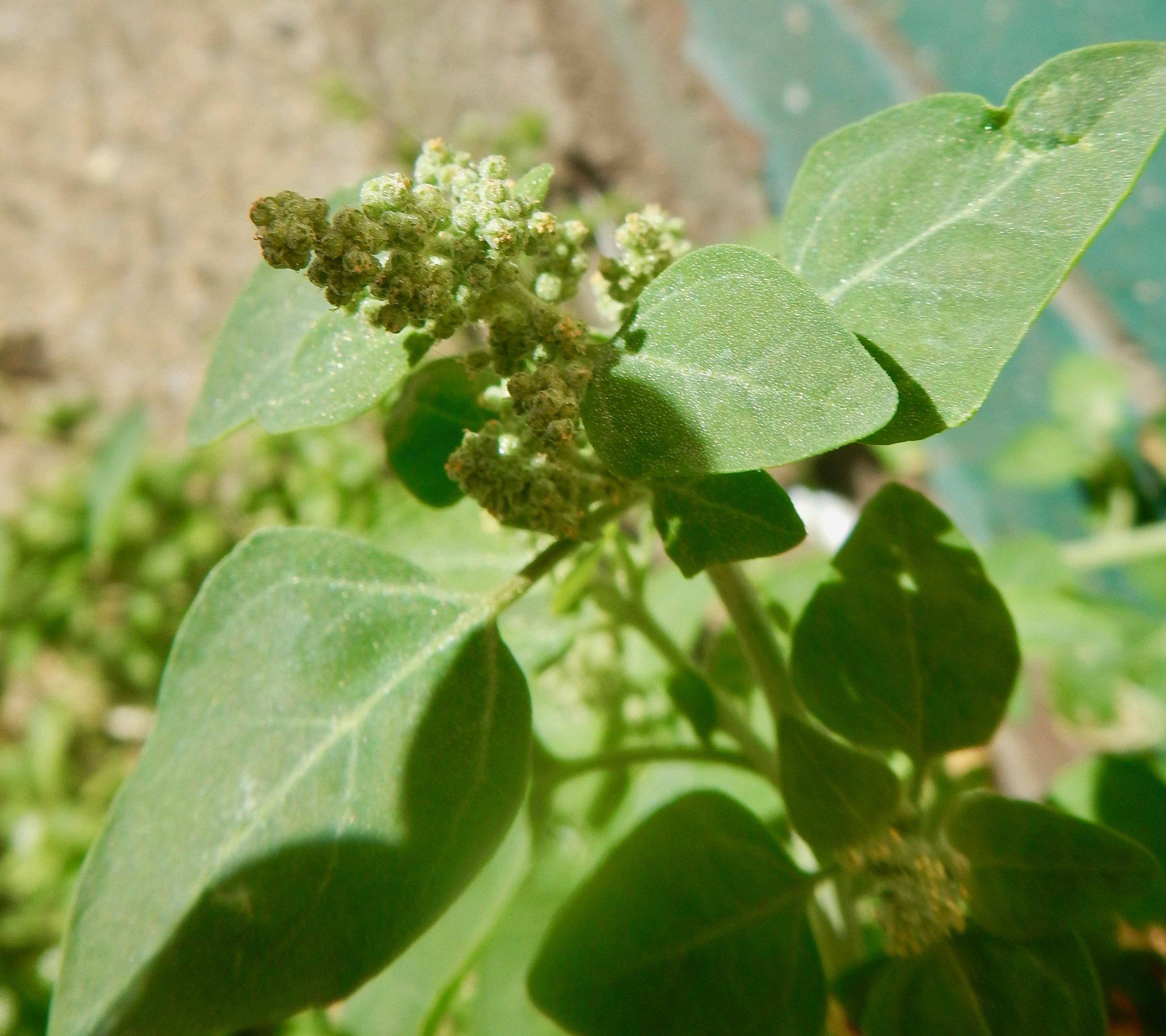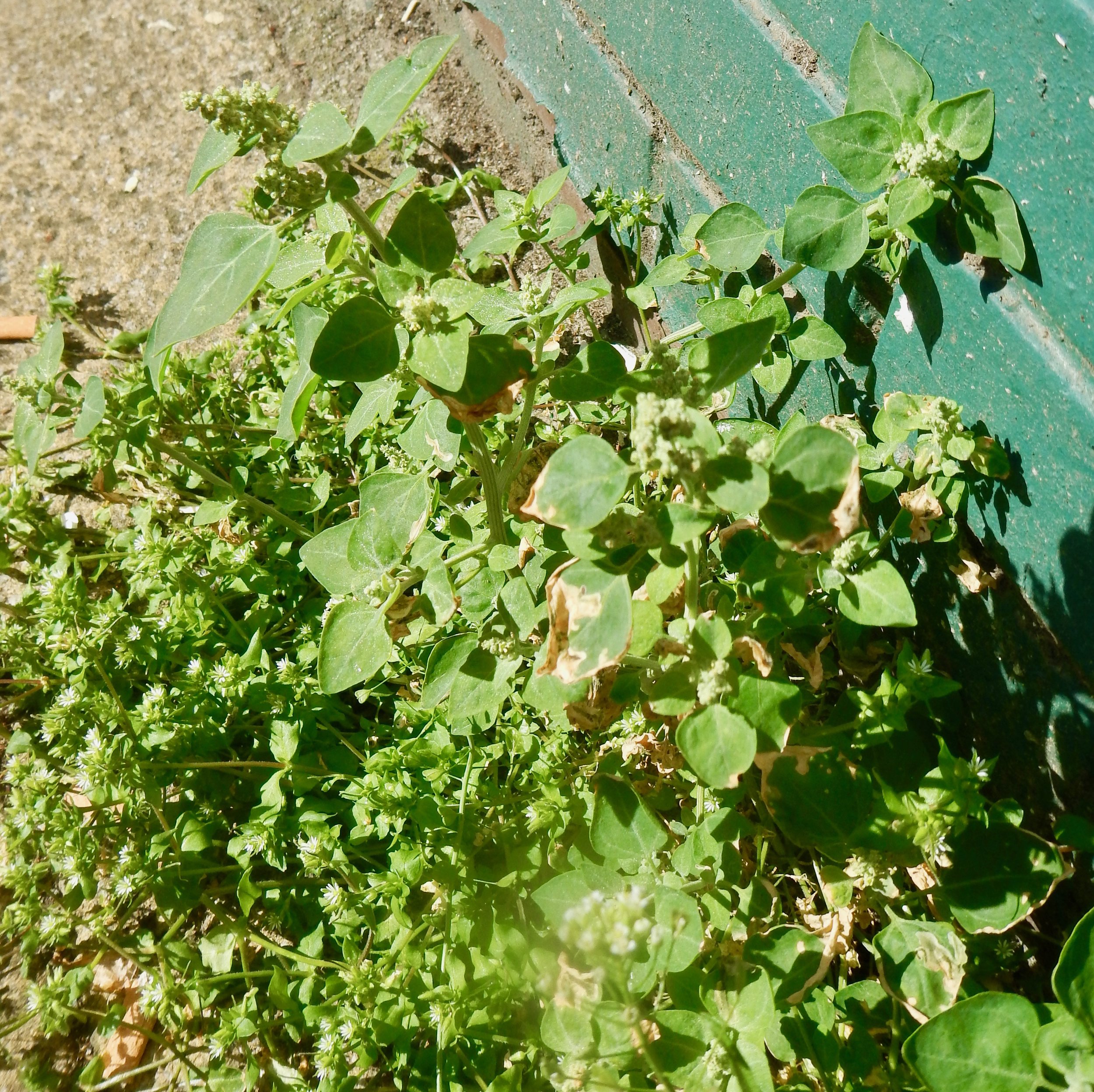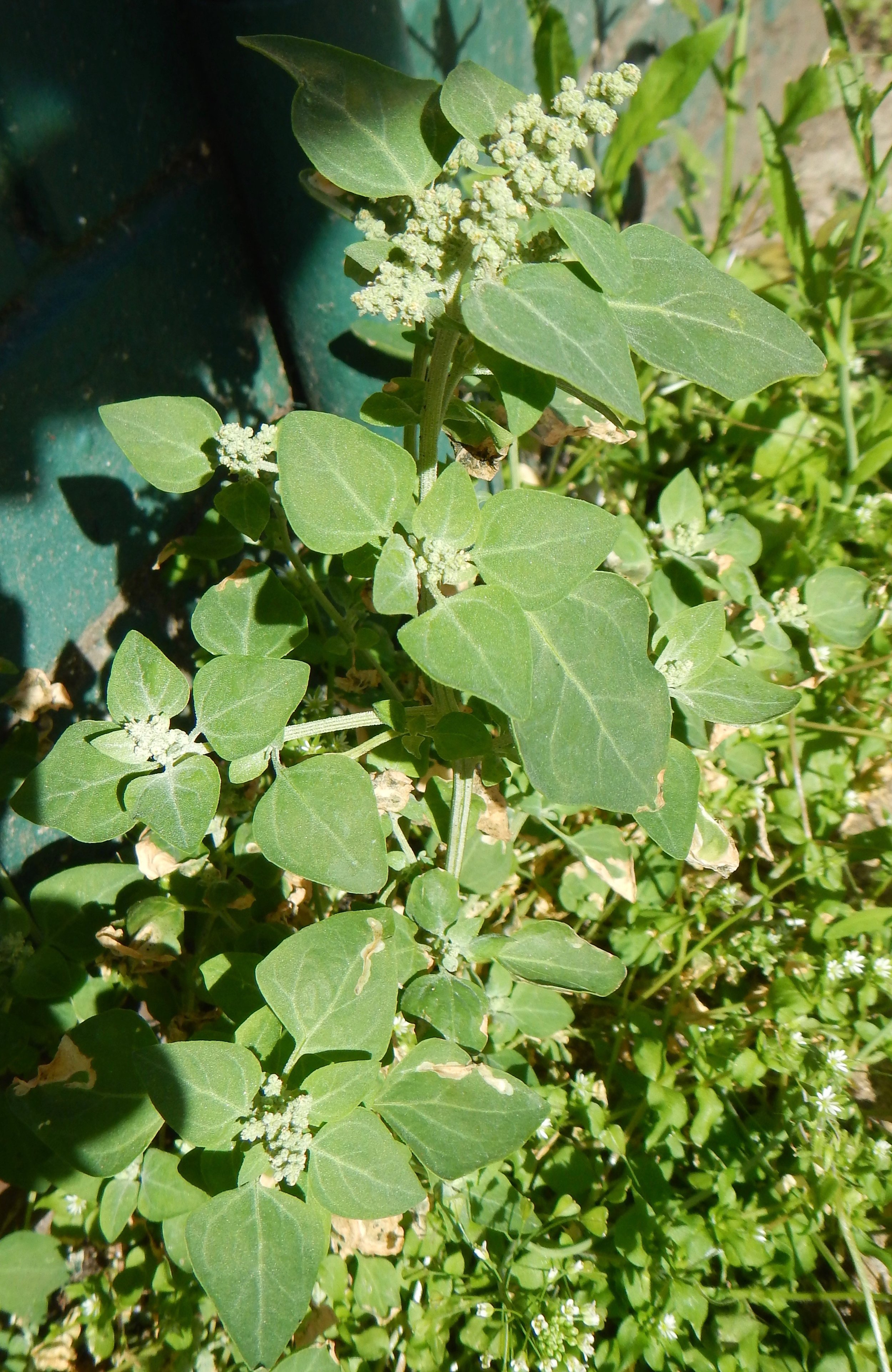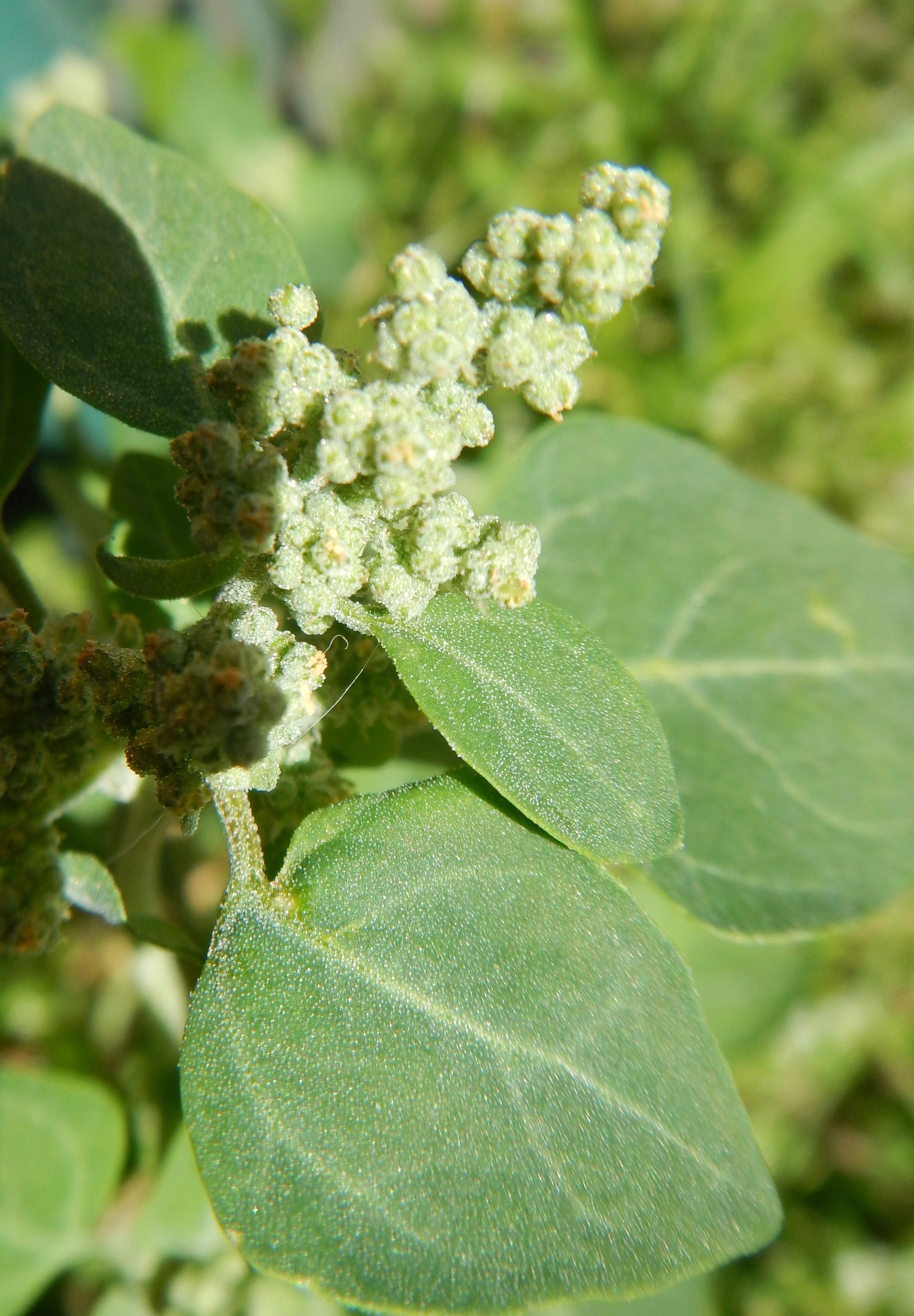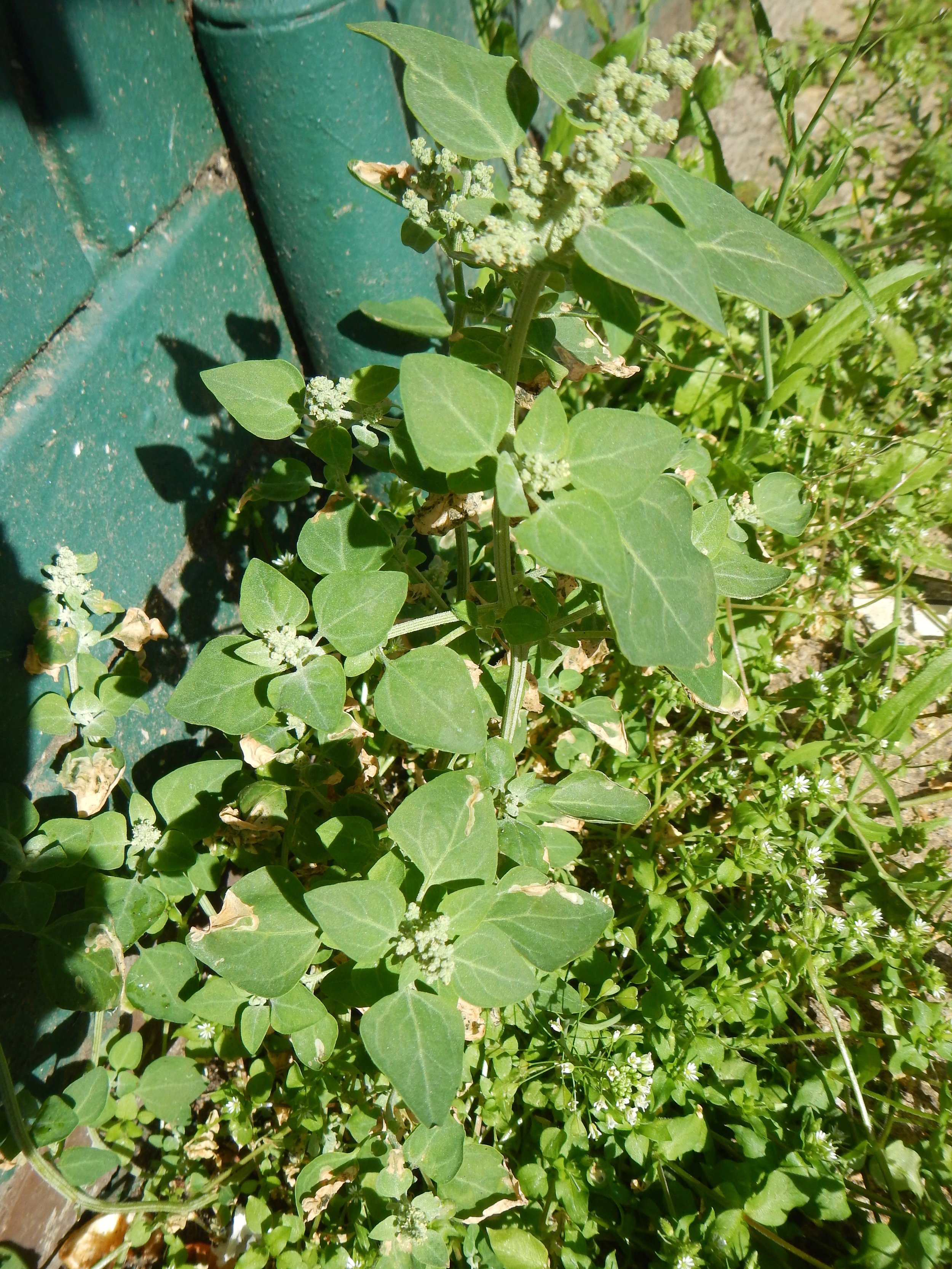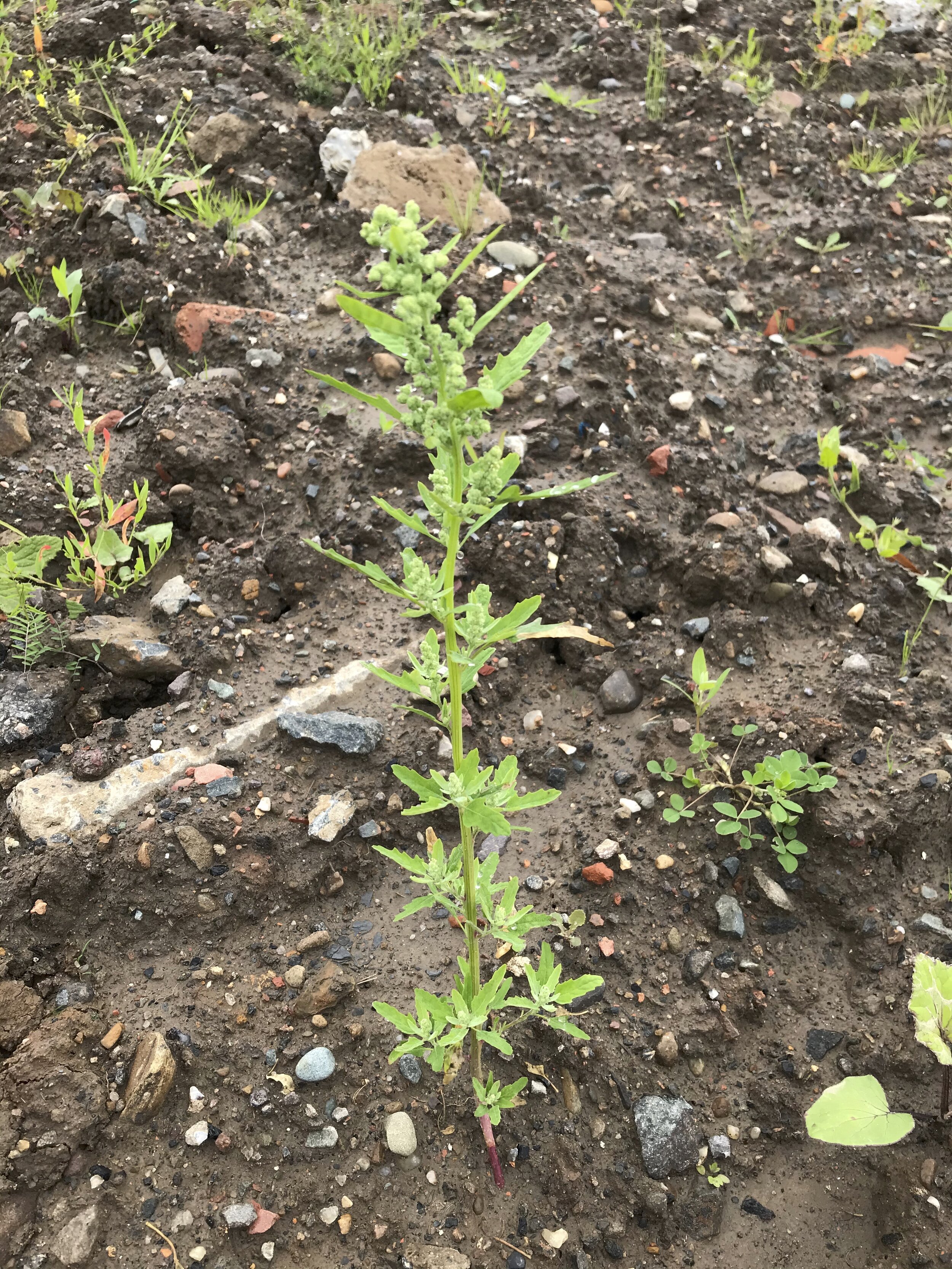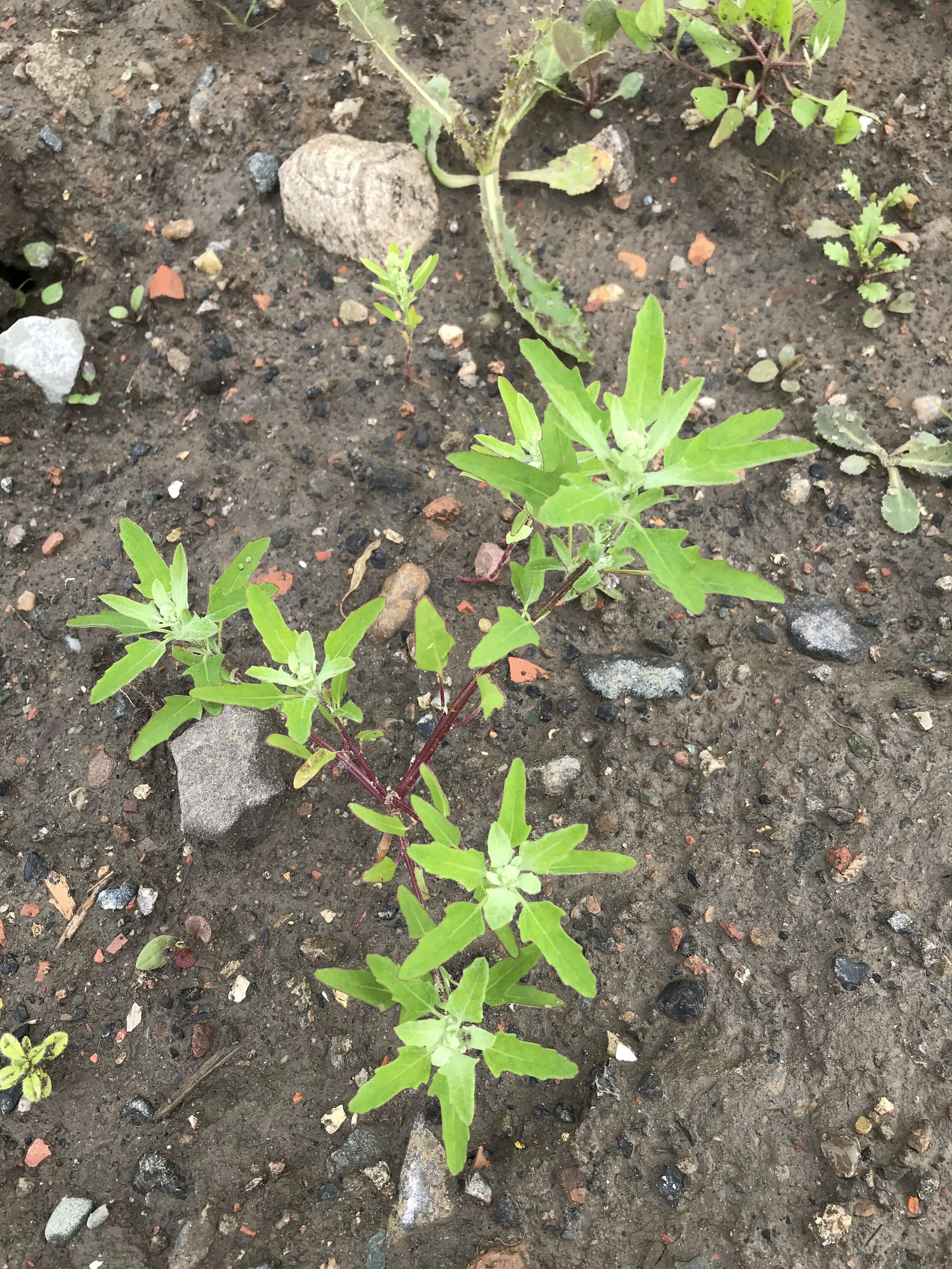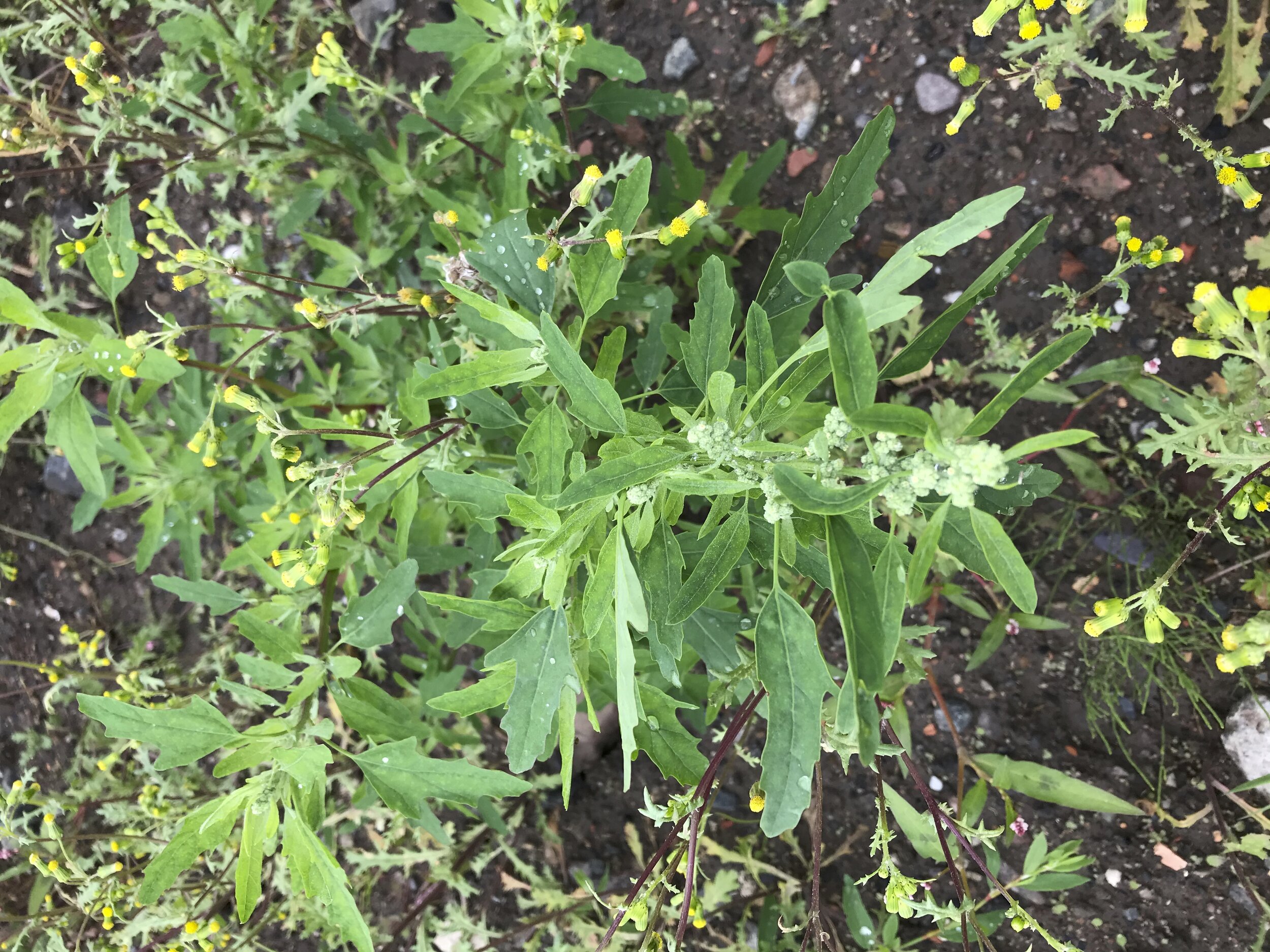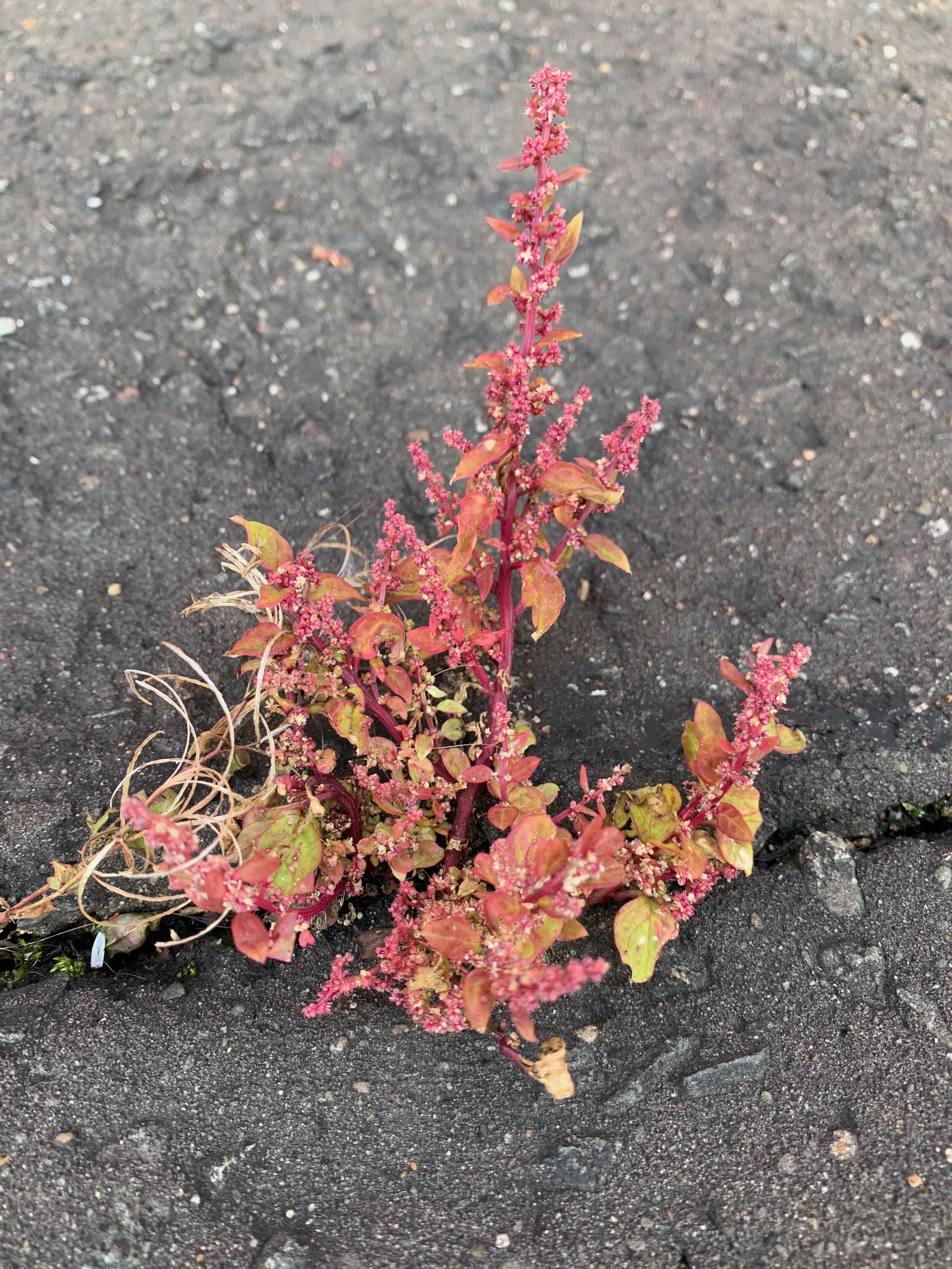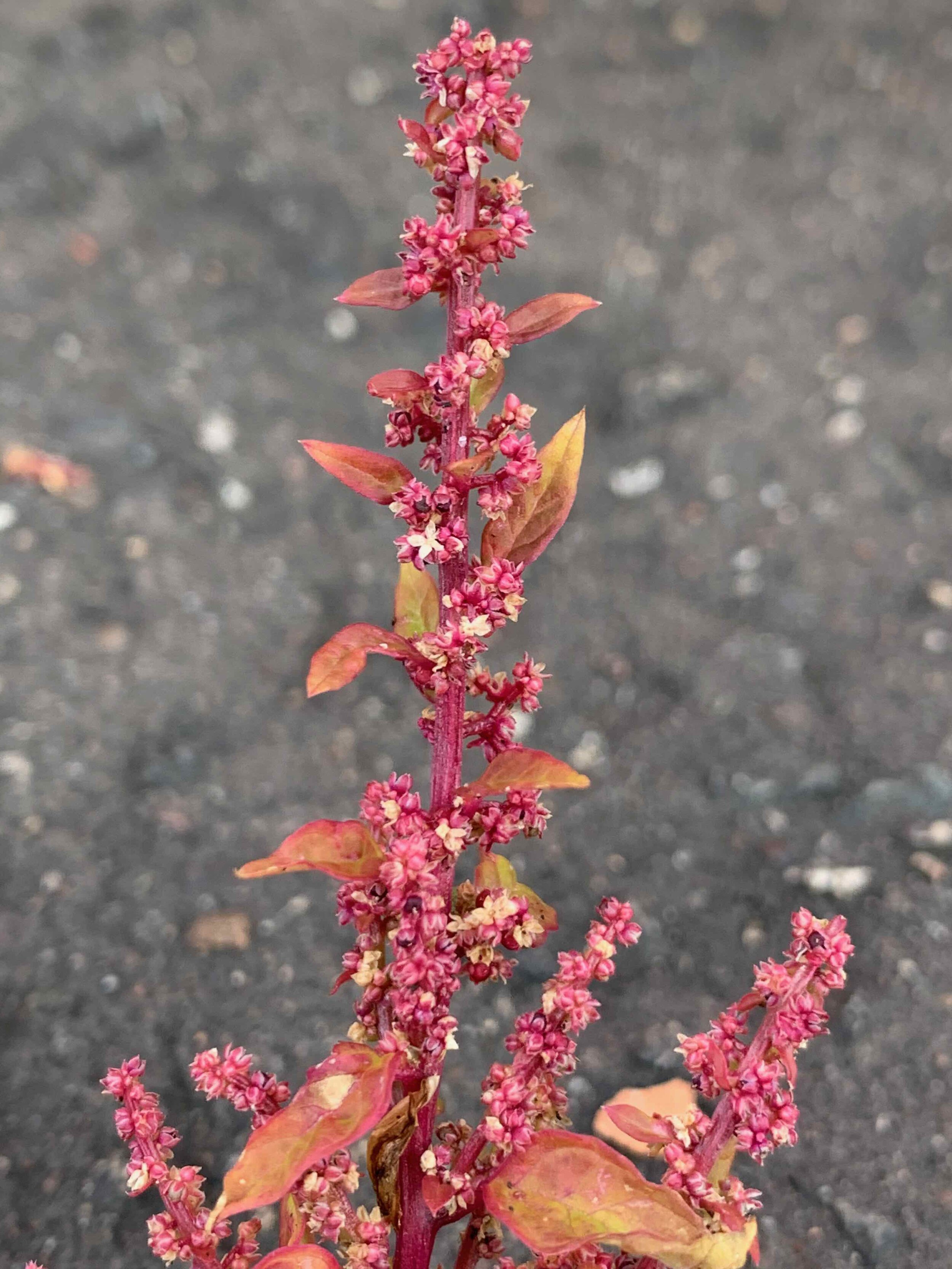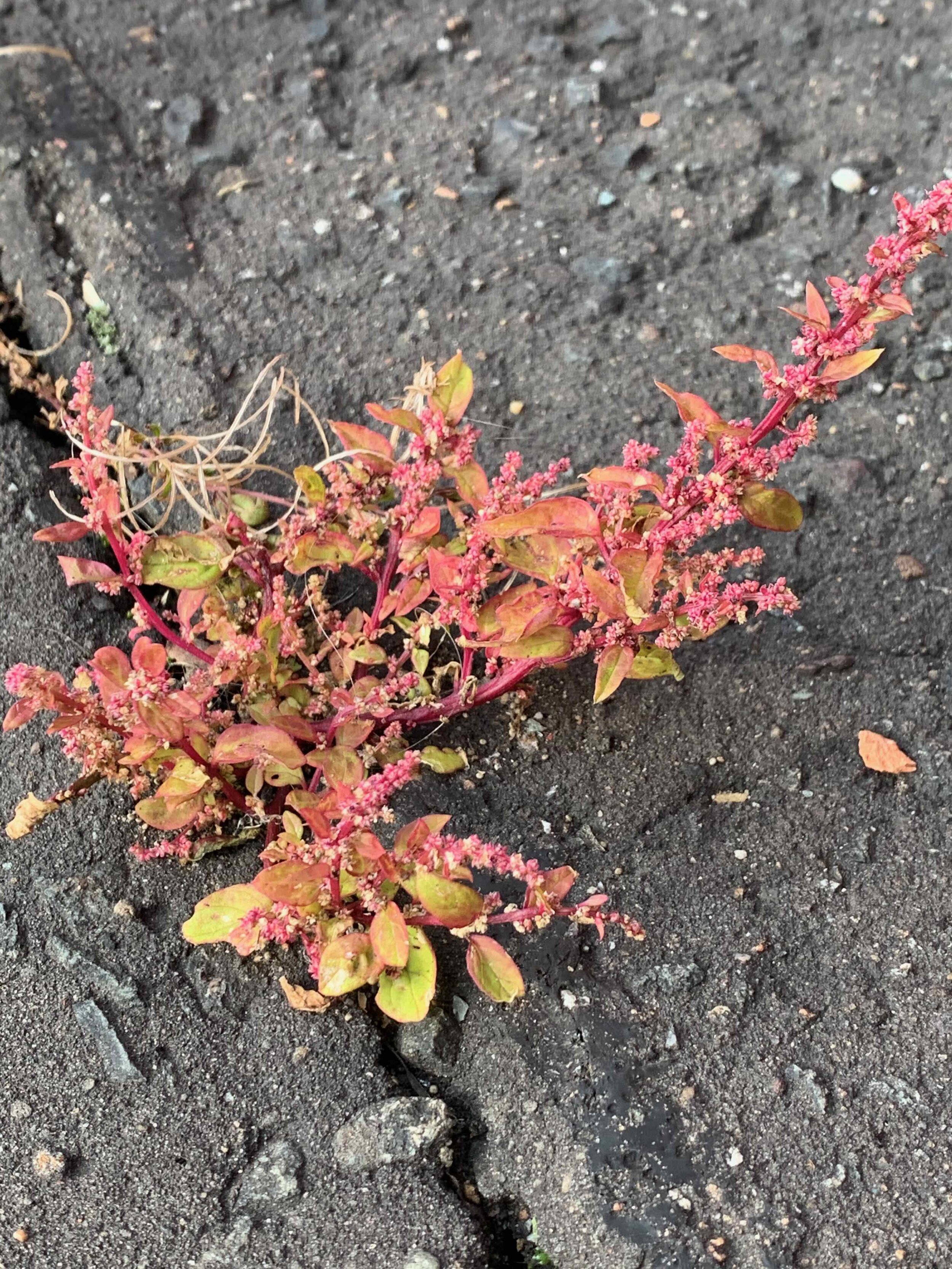Chenopodium species - Goosefoots and Fat-hen
Chenopodium (Goosefoots and Fat-hen) and Atriplex (Oraches) are similar plants with green / yellow flowers and often with mealy leaves. However, Chenopodium have bisexual flowers surrounded by 4 – 5 tepals (sepals / petals) which may be fused at the base whereas, Atriplex has separate male and female flowers with the female flowers and fruit enclosed in two bracts.
To identify them, work out the arrangement of the flower, look at the leaves, are they mealy or fleshy and note the shape of the lobes in the lower leaves compared with the upper leaves.
Chenopodium album Fat-hen is a common agricultural weed. Similar to oraches, but distinguished from them in flower by having both stamens and styles in the same flower. The fruit is enclosed by five equal sepals rather than 2 large bracts as in oraches. At least the lower leaves being toothed. The plant often mealy, especially early in year. Leaves very variable, typically widest at a point well below the middle, narrowing from there with two straightish untoothed sides to the V-shaped base, and with straightish toothed sides to the tip. Flowers in ball-like clusters, which are themselves arranged in spikes, and these in turn arranged in leafy super-spikes. Each flower has 5 green equal sepals, 5 yellow stamens and 2-3 styles.
Chenopodium suecicum Swedish Goosefoot, is like Chenopodium album Fat-hen but not usually tinged with red. It is fresh green rather than greyish- or dark green, little-branched, has slightly more bluntly toothed leaves that are not or hardly paler beneath, and somewhat keeled perianth-segments. The seeds are rather similar in both species but those of C. album have an acute rim (analogous to that of a WWI soldier's tin hat), whereas the rim in C. suaecicum is more obtuse.
Chenopodium bonus-henricus Good-King-Henry is an annual or perennial plant growing up to 400–800 mm tall. The leaves are 50–100 mm long and broad, triangular to diamond-shaped, with a pair of broad pointed lobes near the base, with a slightly waxy, succulent texture. The flowers are produced in a tall, nearly leafless spike 100–300 mm long; each flower is very small (3–5 mm diameter), green, with five sepals. The seeds are reddish-green, 2–3 mm diameter.
It used to be grown as a vegetable and the leaves can be cooked like spinach.
Chenopodium rubrum Red Goosefoot, is an alien plant from North America. It is a weed plant and often grows remarkably quickly, especially in salty areas. It has shiny leaves which are coarsely and irregularly toothed.
Chenopodium vulvaria, Stinking Goosefoot is an uncommon annual weed often spread as a contaminant of bird seed. It is not particularly mealy and the entire and largely un-lobed leaves have a remarkably persistent and unpleasant smell when crushed. Some people have likened it to rotten fish.
Chenopodium ficifolium Fig-leaved Goosefoot. This is uncommon in Lanarkshire. The general pale green colour rather than darker or greyish-green is distinctive, as are the rather narrow 3-lobed leaves with a dominant elongate, shallowly toothed central lobe.
Chenopodium polyspermum Many-seeded Goosefoot. This is another uncommon plant in Lanarkshire. It tends to be red, has a square, leafy stem with pointed, oval, untoothed leaves.

